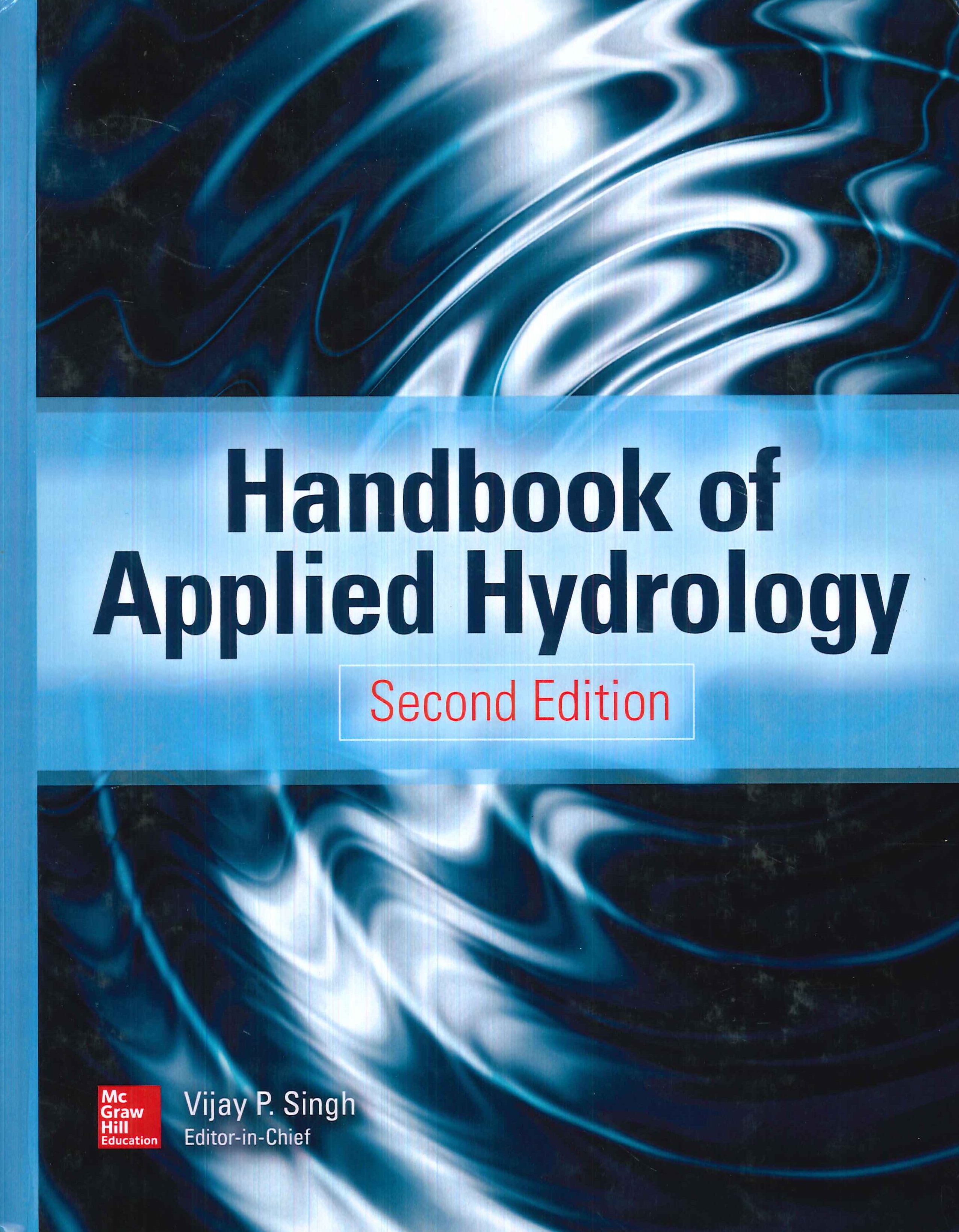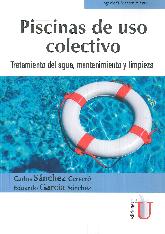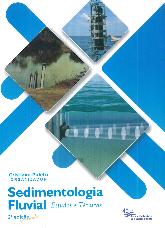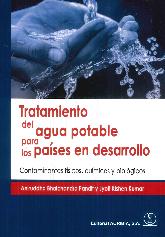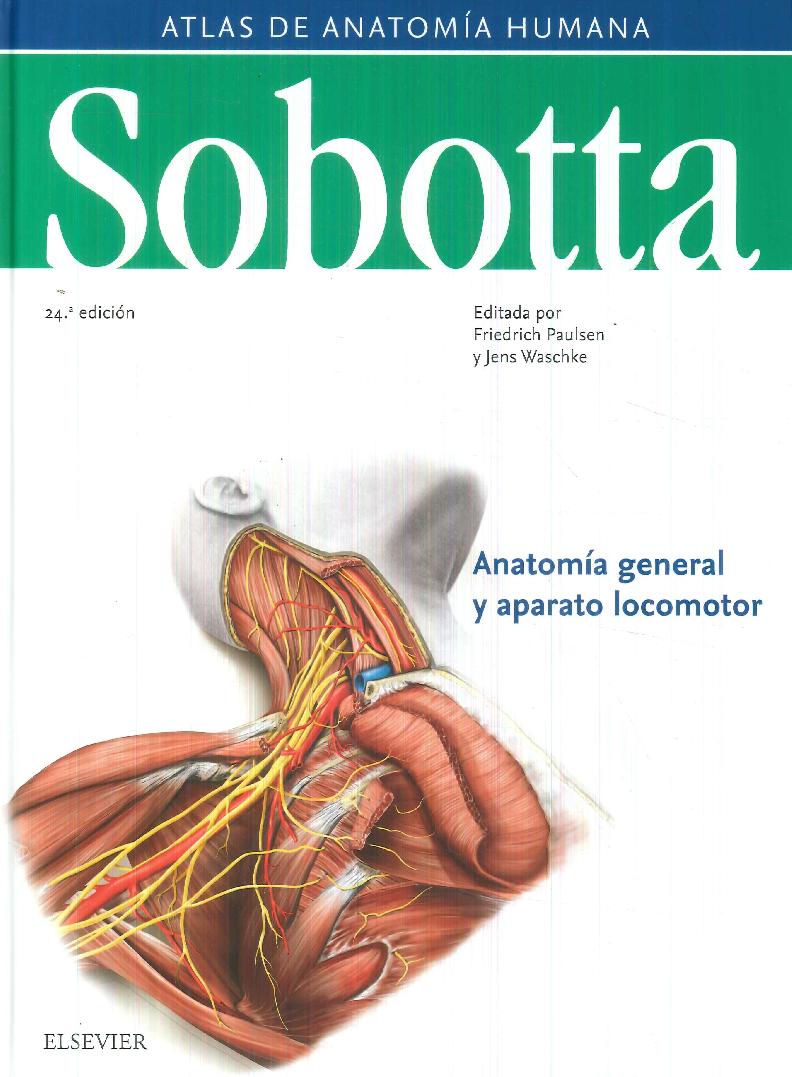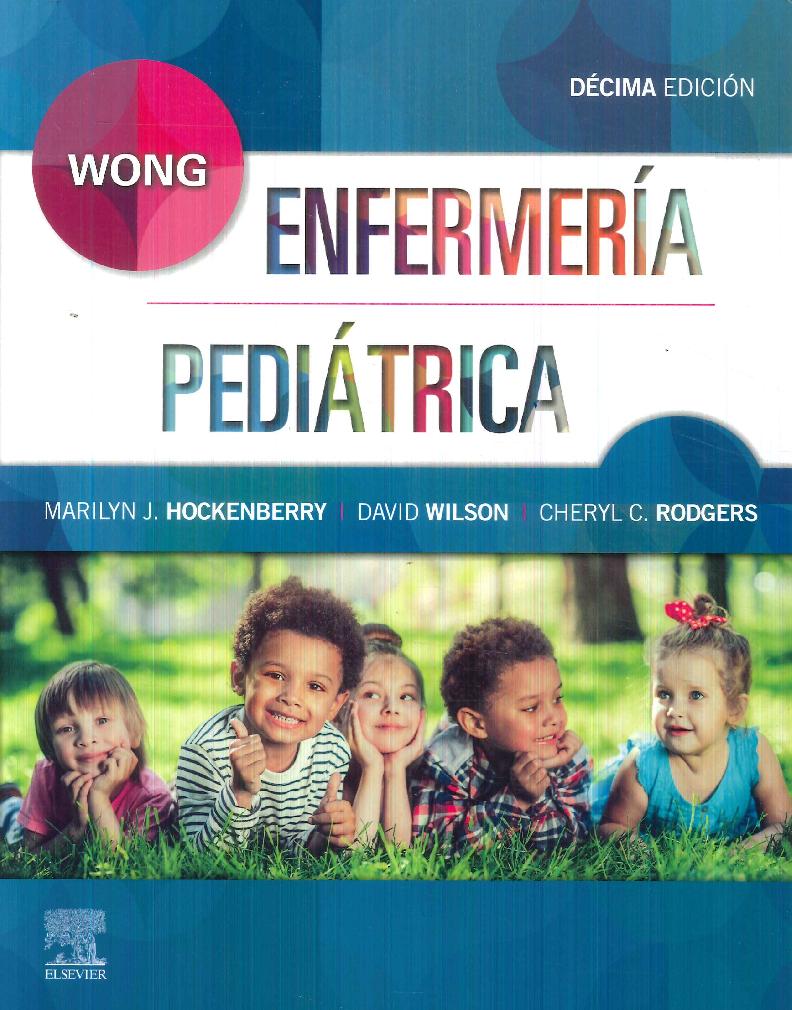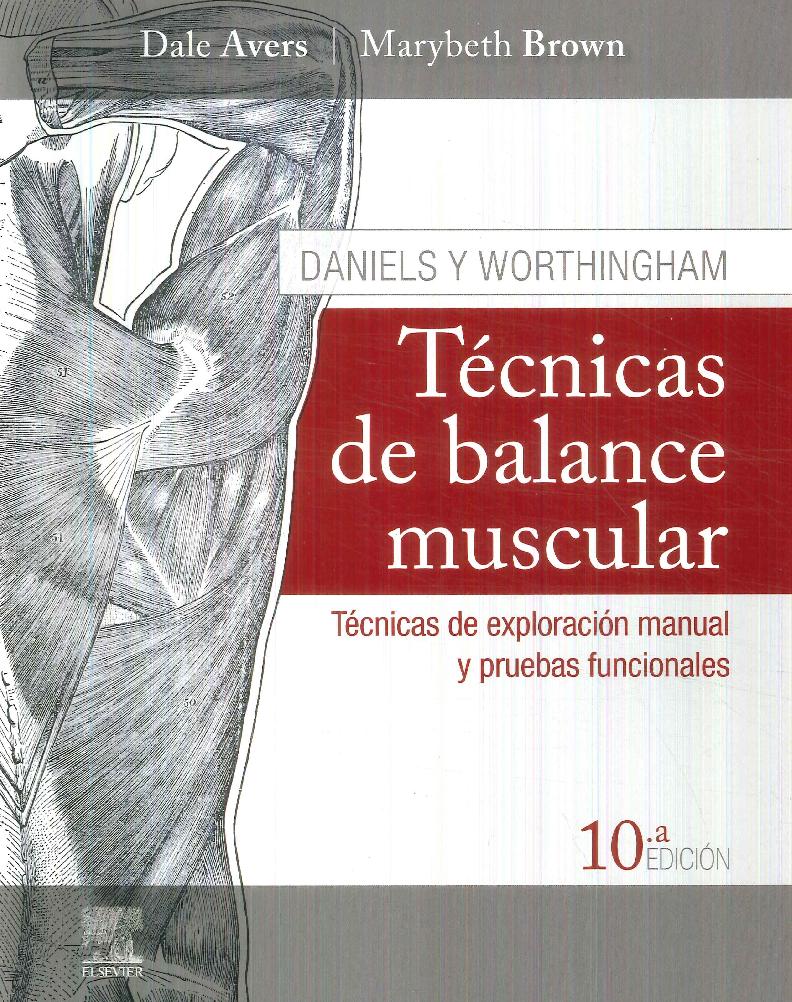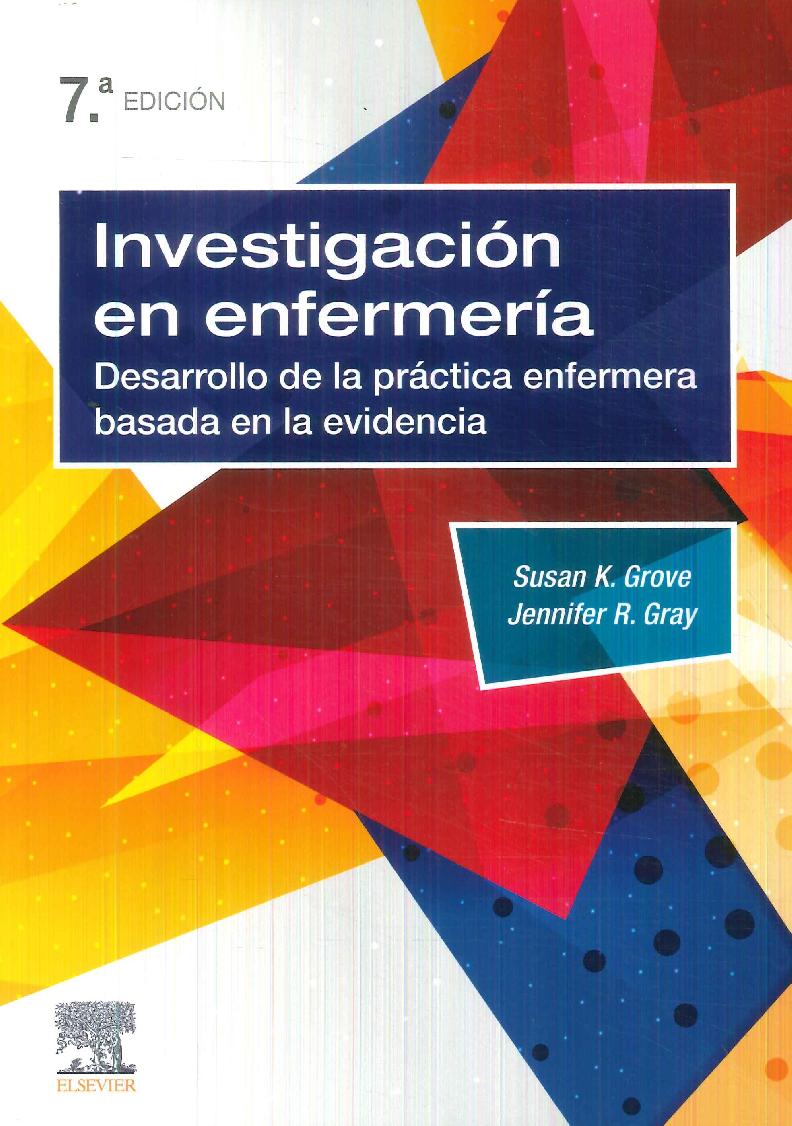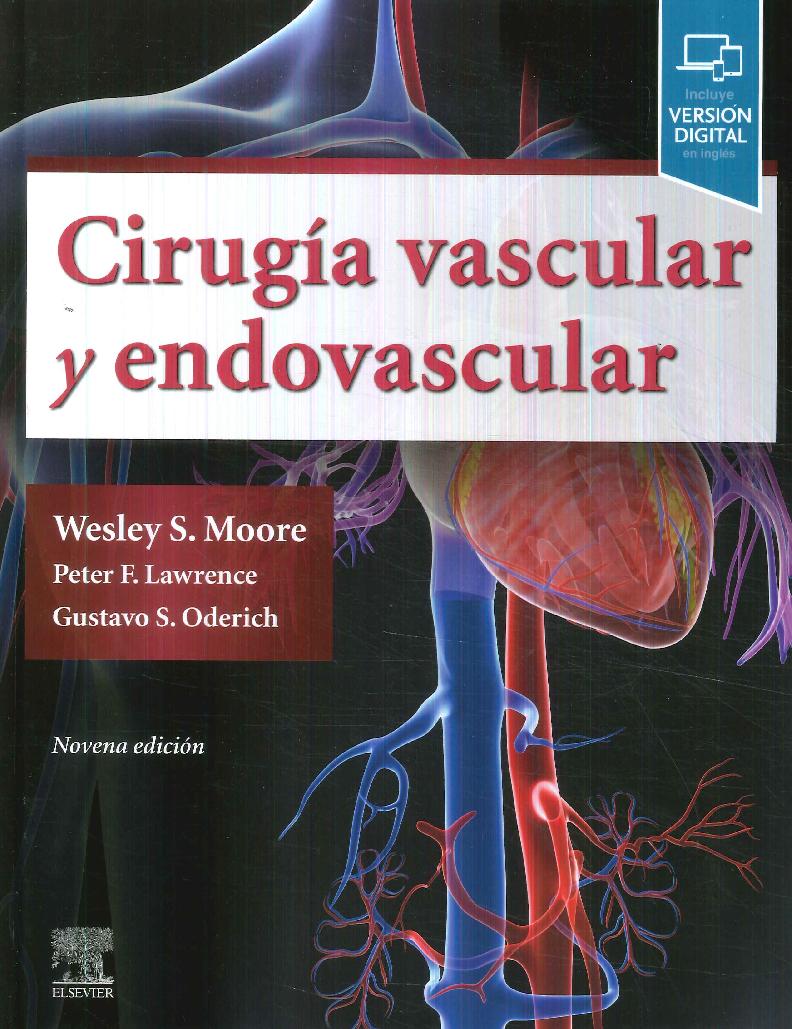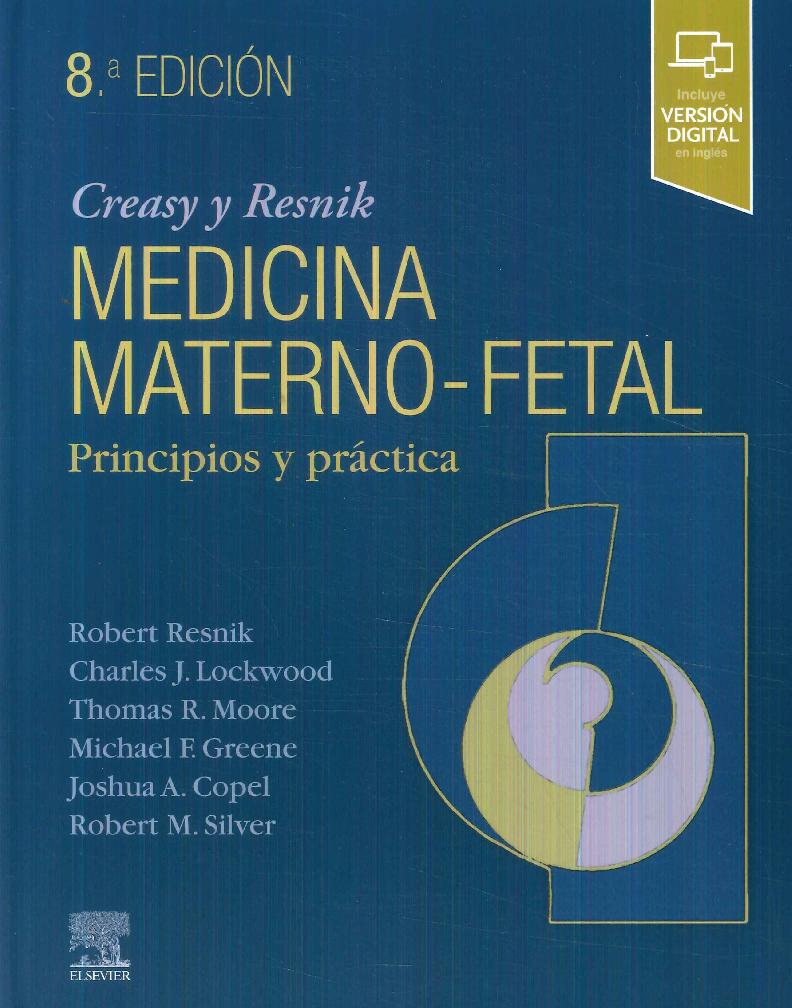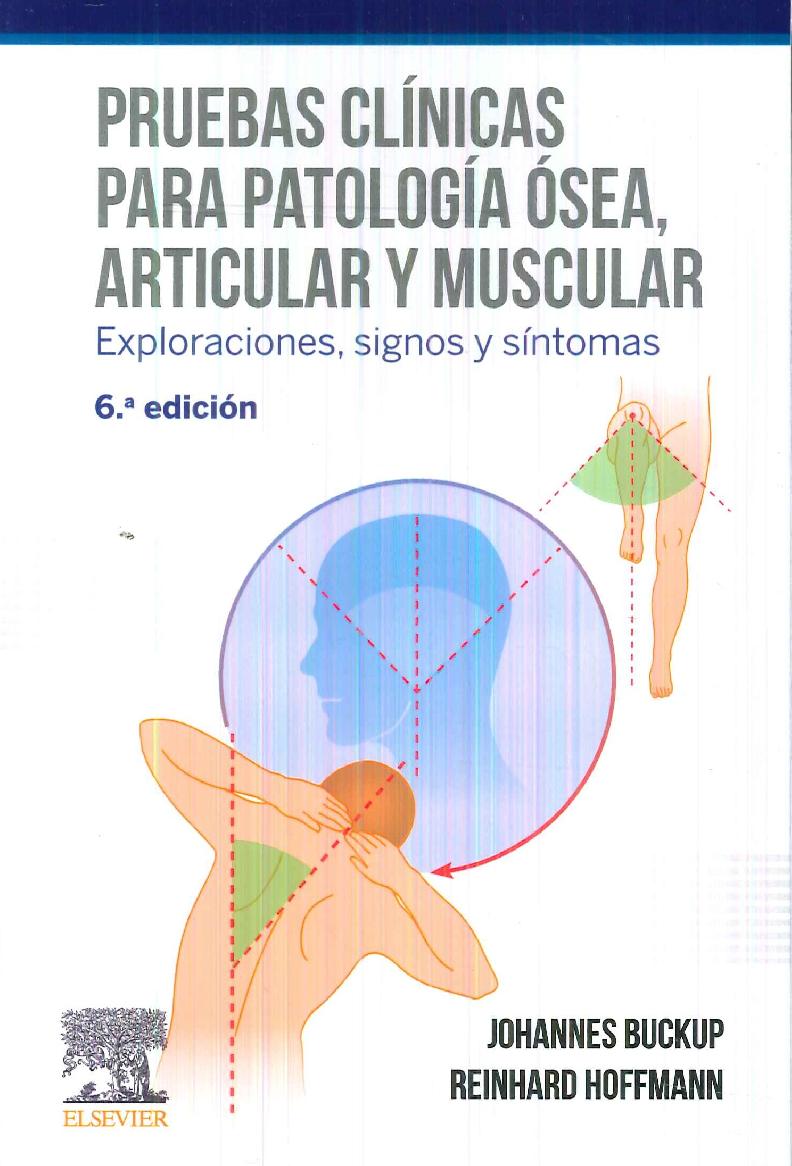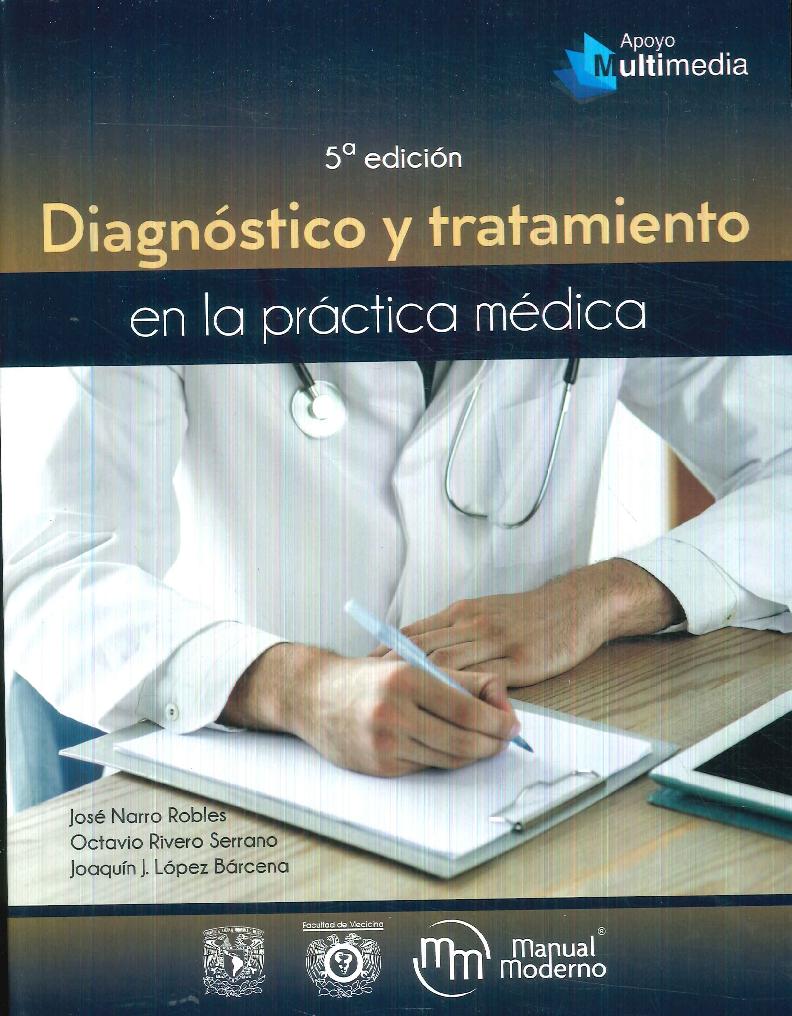Materias
- Administración
- Agronomía
- Arquitectura
- Arte-Conservacion
- Ciencias Naturales
- Contabilidad
- Ciencias Sociales
- Derecho
- Deportes y Yoga
- Diseño
- Economía
- Ciencias Exactas y Astronomia
- GL
- Historia
- Hotelería turismo y protocolo
- Ingeniería
- Informática
- Lengua y Literatura
- Medicina
- Marketing
- Metodología
- Odontología
- Oficios Varios
- Pedagogia
- Psicología
- Química
- Tests
- Veterinaria
- Textos
- Comunicación
-
- Usted esta:
- Inicio
- Ingenieria Hidráulica
- Handbook of Applied Hydrology
Handbook of Applied Hydrology
Autor: Vijay P. Singh
ISBN: 9780071835091
Editorial: McGraw-Hill
Edición: 2
Páginas: 1440
Formato: 23x28.5x5
Cant. tomos: 1
Año: 2017
Idioma:
Origen: Estados Unidos de América
Disponibilidad.:
No Disponible
Gs 3.300.000
Libros Relacionados
Gs 640.000
Gs 224.000
Gs 800.000
Fully Updated Hydrology Principles, Methods, and Applications Thoroughly revised for the first time in 50 years, this industry-standard resource features chapter contributions from a "who's who" of international hydrology experts.
Compiled by a colleague of the late Dr. Chow, Chow's Handbook of Applied Hydrology, Second Edition, covers scientific and engineering fundamentals and presents all-new methods, processes, and technologies.
Complete details are provided for the full range of ecosystems and models. Advanced chapters look to the future of hydrology, including climate change impacts, extraterrestrial water, social hydrology, and water security. Chow's Handbook of Applied Hydrology, Second Edition, covers:
- The Fundamentals of Hydrology
- Data Collection and Processing
- Hydrology Methods
- Hydrologic Processes and Modeling
- Sediment and Pollutant Transport
- Hydrometeorologic and Hydrologic Extremes
- Systems Hydrology
- Hydrology of Large River and Lake Basins
- Applications and Design
- The Future of Hydrology
Compiled by a colleague of the late Dr. Chow, Chow's Handbook of Applied Hydrology, Second Edition, covers scientific and engineering fundamentals and presents all-new methods, processes, and technologies.
Complete details are provided for the full range of ecosystems and models. Advanced chapters look to the future of hydrology, including climate change impacts, extraterrestrial water, social hydrology, and water security. Chow's Handbook of Applied Hydrology, Second Edition, covers:
- The Fundamentals of Hydrology
- Data Collection and Processing
- Hydrology Methods
- Hydrologic Processes and Modeling
- Sediment and Pollutant Transport
- Hydrometeorologic and Hydrologic Extremes
- Systems Hydrology
- Hydrology of Large River and Lake Basins
- Applications and Design
- The Future of Hydrology
Cover
Title Page
Copyright Page
Dedication
Contributors
International Advisory Board
Practitioner Advisory Board
Contents in Brief
Contents
Foreword
Preface
Acknowledgments
Part 1. Fundamentals
Chapter 1. The Hydrologic Cycle
1.1 Characteristics of Water
1.2 Definition of Hydrology
1.3 Hydrologic Cycle
1.4 Components of the Hydrologic Cycle
1.5 Schematic Representation of the Hydrologic Cycle
1.6 Scales in Hydrologic Cycle
1.7 Impact of Climate Change on the Hydrologic Cycle
1.8 Influence of Human Activities and Land Use Changes on Hydrologic Cycle
1.9 Relation Between Hydrologic Cycle and Carbon and Nitrogen Cycles
1.10 Conclusion
References
Chapter 2. Watersheds, River Basins, and Land Use
2.1 Introduction
2.2 Components of Watersheds
2.3 Delineation of a Watershed
2.4 Watershed Hydrological Processes
2.5 Characteristics of a Watershed That Impact on Hydrological Processes
2.6 River Basin
2.7 River Basin Management
2.8 Major River Basins in the World
2.9 Land Use
2.10 Conclusion
References
Chapter 3. Water Balance
3.1 Introduction
3.2 Hydrologic Fluxes
3.3 Water on the Earth
3.4 Water Balance Modeling
3.5 Natural and Anthropogenic Effects on the Water Balance
3.6 Conclusion
References
Part 2. Data Collection and Processing
Chapter 4. Hydrometeors and Quantitative Precipitation Estimation
4.1 Introduction
4.2 Types of Hydrometeorological Data
4.3 Remote Sensing of Precipitation
4.4 Hydrometeorological Data Processing
4.5 Hydrometeorological Data Quality Assurance and Control
4.6 Quantitative Precipitation Estimate, Data Use, Archiving, and Accessibility
Chapter 5. Streamflow Data
5.1 Streamflow
5.2 Types of Streamflow Data
5.3 Streamgage Operation
5.4 Quality Assurance of Streamgage Data
5.5 Derived Streamflow Uncertainty
References
Chapter 6. Streamflow Ratings
6.1 Introduction
6.2 Rating Controls
6.3 Simple Ratings
6.4 Complex Ratings
6.5 Slope Ratings
6.6 Rate of Change of Stage Methods
6.7 Dynamic-Flow Model Methods
6.8 Index-Velocity Method
6.9 Shifting-Control Method for Dealing with Rating Complexities
6.10 Uncertainty in Ratings
References
Chapter 7. Hydrologic Information Systems
7.1 Introduction
7.2 Hydrologic Data Management
7.3 Service-Oriented Architectures for Integrating Distributed Hydrologic Data and Models
7.4 The CUAHSI Hydrologic Information System as an Example HIS
7.5 HydroShare as a Next-Generation HIS Software
7.6 Conclusion
References
Chapter 8. Remote Sensing Techniques and Data Assimilation for Hydrologic Modeling
8.1 Introduction
8.2 Remote Sensing Theory
8.3 Remote Sensing in Hydrological Sciences: A Historical Perspective
8.4 Remote Sensing: Methods and Techniques
8.5 Data Assimilation: Theory
8.6 Summary
References
Chapter 9. Geographic Information Systems
9.1 Introduction
9.2 Basic Principles of GIS
9.3 Data Sources and Characteristics
9.4 Representation of Model Inputs
9.5 Model/GIS Interfaces
9.6 Current Status and Future Directions
References
Chapter 10. Design of Hydrologic Networks
10.1 Introduction
10.2 Hydrologic Networks
10.3 Necessity of Hydrologic Networks
10.4 Impact of Hydrologic Network Density on Streamflow Estimates
10.5 Design Considerations
10.6 Design of Hydrologic Networks: Methodologies
10.7 Conclusion
References
Part 3. Methods
Chapter 11. Artificial Neural Networks
11.1 Introduction
11.2 Historical Development
11.3 Artificial Neural Networks
11.4 ANN Training and Testing
11.5 Drawbacks of ANN Technique
11.6 Shortcomings in ANN Modeling
11.7 Future Direction
References
Chapter 12. Fuzzy Logic
12.1 Fuzzy Logic Basics
12.2 Function of Fuzzy Numbers
12.3 Fuzzy Rule-Based Modeling (Fuzzy Inference)
Acknowledgment
References
Chapter 13. Evolutionary Computing: Genetic Algorithms
13.1 Introduction
13.2 Evolutionary Computing in Hydrology: An Overview
13.3 Genetic Algorithms
13.4 GA Applications in Hydrology
13.5 Conclusion and Future Directions
References
Chapter 14. Relevance Vector Machine
14.1 Introduction
14.2 Background
14.3 Mathematical Formulation
14.4 Application of RVM
14.5 Examples from Hydrology and Future Scope
14.6 Miscellaneous Topics
References
Chapter 15. Harmonic Analysis and Wavelets
15.1 Introduction
15.2 The Continuous Wavelet Transform
15.3 Discrete Time Wavelet Transform and Multiresolution Analysis
15.4 Signal Energy Repartition in the Wavelet Frame
15.5 Wavelet Analysis of the Time-Scale Relationship Between Two Signals
15.6 Wavelet Cross Spectrum and Coherence
15.7 Applications of Wavelet Transforms in Hydrology and Earth Sciences
15.8 Perspectives
References
Chapter 16. Outlier Analysis and Infilling of Missing Records in Hydrologic Data
16.1 Introduction
16.2 Concepts and Methods for Outlier Analysis
16.3 Concepts and Methods for Handling Missing Records
16.4 Discussion and Concluding Remarks on Methods for Outliers and Infilling of Missing Records
16.5 Future Research Directions
References
Chapter 17. Linear and Nonlinear Regression
17.1 Linear and Nonlinear Regression
17.2 Measures for Goodness of Fit
17.3 Multiple Linear Regression
17.4 Nonlinear Regression
References
Chapter 18. Time Series Analysis and Models
18.1 Introduction
18.2 Properties of Hydrological Time Series
18.3 Time-Series Modeling
18.4 Modeling of Continuous Time Processes
18.5 Univariate Modeling
18.6 Univariate Periodic Modeling
18.7 Multivariate Modeling
18.8 Disaggregation Models
18.9 Nonparametric Models
18.10 Stochastic Simulation, Forecasting, and Uncertainty
18.11 Conceptual Stochastic Modeling
18.12 Final Remarks and Future Challenges
References
Chapter 19. Statistical Detection of Nonstationarity: Issues and Needs
19.1 Introduction
19.2 Exploratory Methods for Detection of Change
19.3 Statistical Exploration of Nonstationarity
19.4 Effect of Nonconstant Error Variation
19.5 Effect of a Filtering of Time Series
19.6 Distribution of a Breakpoint
19.7 Conclusion
Chapter 20. Spatial Analysis and Geostatistical Methods
20.1 Introduction
20.2 Data Types and Methods
20.3 Spatial Analysis
20.4 Heterogeneous Field Estimation and Simulation
20.5 Summary
Acknowledgments
References
Chapter 21. Frequency Distributions
21.1 Introduction
21.2 Discrete Frequency Distributions
21.3 Classification of Continuous Frequency Distributions
21.4 Continuous Frequency Distributions
21.5 Conclusion
References
Chapter 22. Calibration, Parameter Estimation, Uncertainty, Data Assimilation, Sensitivity Analysis, and Validation
22.1 Introduction
22.2 Parameter Uncertainty
22.3 Parameter Estimation
22.4 Data Assimilation
22.5 Sensitivity Analysis
22.6 Validation Techniques
References
Chapter 23. Bayesian Methods
23.1 Introduction
23.2 The Bayesian Inference Framework
23.3 Computational Methods
23.4 Diagnostics to Scrutinize Model Assumptions
23.5 Applications in Hydrology
23.6 Conclusion
Acknowledgments
References
Chapter 24. Optimization Approaches for Integrated Water Resources Management
24.1 Introduction
24.2 Trends
24.3 Challenges and Research Gaps
24.4 Conclusion
24.5 Acknowledgments
24.6 Appendix: Literature Trend Analysis
References
Chapter 25. Nonparametric Methods
25.1 Introduction
25.2 Definitions
25.3 Methods
25.4 Applications
25.5 Discussion
References
Chapter 26. Predictive Uncertainty Assessment and Decision Making
26.1 Introduction
26.2 Forecasting in Hydrology
26.3 Motivations for Converting Deterministic to Stochastic Prediction
26.4 Predictive Uncertainty
26.5 Techniques Aimed at Assessing Predictive Uncertainty
26.6 Verification of the Estimated Predictive Density
26.7 Major Reasons Undermining the Operational Use of Predictive Uncertainty
26.8 Examples of Proper Use of Predictive Uncertainty to Improve Decisions
References
Chapter 27. Risk-Reliability Analysis
27.1 Introduction
27.2 Measures of Reliability
27.3 Performance Function and Reliability Index
27.4 Direct Integration Method
27.5 First-Order Second-Moment Reliability Methods
27.6 Time-Dependent (Dynamic) Reliability Models
27.7 Time-to-Failure Analysis
27.8 Monte Carlo Simulation
References
Chapter 28. Scaling and Fractals
28.1 Introduction
28.2 Scale-Invariant Sets and Functions
28.3 Some Properties of H-SSSI Processes and MF Cascades
28.4 Inference of Scaling for Stationary Multifractal Measures
28.5 Processes with Limited Scale Invariance
28.6 Conclusion
Acknowledgments
References
Chapter 29. Nonlinear Dynamics and Chaos
29.1 Introduction
29.2 Chaos Theory: A Brief History
29.3 Chaos Concepts and Identification Methods
29.4 Issues in Chaos Identification and Prediction
29.5 Hydrologic Applications
29.6 Final Remarks
Acknowledgments
References
Chapter 30. Copula Modeling in Hydrologic Frequency Analysis
30.1 Introduction
30.2 Description of Copula Models
30.3 Overview of Model Selection
30.4 Multivariate Quantile and Return Period
30.5 An Illustration: The Fraser River at Hope
30.6 Extensions
30.7 Resources and Further Specific References
Acknowledgments
References
Chapter 31. Entropy Theory
31.1 Origin
31.2 Definition
31.3 Forms of Entropy
31.4 Directional Information Transfer Index
31.5 Entropy under Transformation of Variables
31.6 Informational Correlation Coefficient
31.7 Total Correlation
31.8 Theory of Entropy
31.9 Methodology for Application
31.10 Hydrologic Modeling Using Entropy Theory
31.11 Conclusion
References
Chapter 32. Entropy Production Extremum Principles
32.1 Introduction
32.2 Background and Review
32.3 Maximum Entropy Analysis
32.4 Review of Applications in Hydrology and Hydraulics
32.5 Conclusion
References
Chapter 33. Data-Based Mechanistic Modeling
33.1 Introduction
33.2 The Main Stages of DBM Modeling
33.3 Linear DBM Models
33.4 Time Variable and State-Dependent Parameter Models
33.5 Hypothetico-Inductive DBM Modeling
33.6 DBM Emulation Modeling of High-Order Simulation Models
33.7 Conclusion
References
Chapter 34. Decomposition Methods
34.1 Introduction: Adomian's Decompositions Method
34.2 Regional Flow in an Unconfined Aquifer
34.3 Propagation of Nonlinear Kinematic Flood Waves in Rivers
34.4 Nonlinear Infiltration in Unsaturated Soils
34.5 Summary and Conclusion
References
Chapter 35. Network Theory
35.1 Introduction
35.2 Network Theory: Concept and History
35.3 Network Types
35.4 Network Measures
35.5 Applications in Hydrology
35.6 Conclusion
Acknowledgments
References
Chapter 36. Hydroeconomic Analysis
36.1 Introduction
36.2 Estimating the Economic Value of Water
36.3 Water Demand Functions
36.4 Considerations in the Design of Hydroeconomic Analysis Studies
36.5 Applications and Implementation of Hydroeconomic Analysis for Management and Decision Support
36.6 Discussion of Challenges, Limitations, and Future Directions
36.7 Conclusion
References
Part 4. Hydrologic Processes and Modeling
Chapter 37. Weather and Climate
37.1 Introduction
37.2 Hydrologic Engineering and Intersection with Weather and Climate
37.3 Weather
37.4 Observing Weather
37.5 Climate
37.6 Climate Change
References
Chapter 38. Hydroclimatology: Global Warming and Climate Change
38.1 Introduction: The Ambiguity of Climate
38.2 Natural and Human Influences on Present-Day Climate
38.3 Impacts of Climate Change on the Hydrological Cycle in the Twentieth and Twenty-First Centuries
38.4 Global Climate Models
38.5 Working with Climate Model Projections
38.6 Conclusion
References
Chapter 39. Spatial and Temporal Estimation and Analysis of Precipitation
39.1 Introduction
39.2 Estimates of Mean Areal Precipitation
39.3 Missing Precipitation Data Estimation Methods
39.4 Limitations of Estimation Methods
39.5 New Methods for Missing Data Estimation
39.6 Summary of Issues for Missing Precipitation Data Estimation
39.7 Conclusion
References
Chapter 40. Snow Distribution and Snowpack Characteristics
40.1 Introduction
40.2 Processes Controlling Snow Distribution
40.3 Spatial Patterns of Snow at Various Scales
40.4 Snowpack Characteristics
40.5 Discussion and Conclusion
Acknowledgment
References
Chapter 41. Time-Space Modeling of Precipitation
41.1 Introduction
41.2 Stochastic Modeling of Precipitation
41.3 Deterministic Numerical Modeling of Time-Space Precipitation
41.4 Remote Sensing for the Modeling of Time-Space Precipitation
References
Chapter 42. Evapotranspiration and Evaporative Demand
42.1 Introduction and History of Theory
42.2 Relevant Concepts and Methods
42.3 Outstanding Problems and Directions for Future Work
Acknowledgments
References
Chapter 43. Rainfall Interception, Detention, and Depression Storage
43.1 Canopy Interception Loss
43.2 Forest Floor Interception Loss
43.3 Detention and Depression Storage
43.4 Summary
References
Chapter 44. Watershed Geomorphological Characteristics
44.1 Introduction and Literature Review
44.2 Watersheds and Drainage Networks
44.3 Outstanding Problems and Directions for Future Work
References
Chapter 45. Infiltration Modeling
45.1 Introduction
45.2 Basic Equations for Vertical Infiltration
45.3 Classical Models for Point Infiltration into Vertically Homogeneous Soils
45.4 Modeling of Point Infiltration into Vertically Nonuniform Soils
45.5 Models for Rainfall Infiltration over Heterogeneous Areas
45.6 Soil Conservation Service Runoff Curve Number Model
45.7 Open Problems
References
Chapter 46. Soil Moisture and Vadose Zone Modeling
46.1 Background
46.2 Continuum-Scale Models for Partially Saturated Flow in the Vadose Zone
46.3 Numerical Vadose Zone and Land Surface Models
46.4 Soil Moisture across Spatial-Temporal Scales
46.5 Inverse Modeling-Soil Hydraulic Properties at the Model Grid Scale
46.6 Summary
References
Chapter 47. Hydrogeologic Characterization
47.1 Introduction
47.2 Borehole Samples and Groundwater Monitoring Wells
47.3 Investigation of Borehole Drilling
47.4 Cone Penetrometry, Permeametry, and Electrical Conductivity Logging
47.5 Electrical Resistivity Survey
47.6 Hydraulic Methods for in Situ Conductivity Measurement
47.7 Characterization of the Hydraulic Gradient and Flow Rates
47.8 Recharge Estimation
47.9 Summary
References
Chapter 48. Groundwater Modeling
48.1 Introduction
48.2 Groundwater Model Development
48.3 Grid Generation
48.4 Model Calibration
48.5 Case Study: Groundwater Modeling in Baton Rouge, Southeastern Louisiana
48.6 Summary
Acknowledgments
References
Chapter 49. Watershed Runoff, Streamflow Generation, and Hydrologic Flow Regimes
49.1 Introduction
49.2 Dominant Runoff Generation Mechanisms
49.3 Infiltration Equations
49.4 Factors Affecting Runoff
49.5 Poorly Understood Factors Affecting Runoff Generation
Acknowledgments
References
Chapter 50. Snowmelt Runoff Generation and Modeling
50.1 Introduction
50.2 Snow Accumulation Processes
50.3 Energy Budget of Snow Pack and Snowmelt
50.4 Simulation of Snow Accumulation Processes
50.5 Heat and Water Transfer in Melting Snow Cover
50.6 Spatial Variability of Snow Cover
50.7 Constructing General Model of Snowmelt Runoff Generation
50.8 Case studies
References
Chapter 51. Glacial Melting and Runoff Modeling
51.1 Introduction
51.2 Remote Sensing
51.3 Application of Remote Sensing in Glacier Quantification
51.4 Glaciated Versus Nonglaciated Watersheds
51.5 Application in Streamflow Measurement
51.6 Conclusion
References
Chapter 52. Reservoir and Channel Routing
52.1 Introduction
52.2 Reservoir Routing
52.3 River Routing
52.4 The Classical Muskingum Flood Routing Method
52.5 Nash Cascade Model for River Routing
52.6 Other Linear Storage Models
52.7 Linear Diffusion Analogy Routing Method
52.8 Nonlinear Routing Methods
52.9 Flow Routing Using Hydraulic Methods
52.10 Basis for the Development of Simplified Momentum Equations
52.11 Simplified Hydraulic Flood Routing Methods
52.12 Kalinin-Milyukov Method
52.13 Variable Parameter Muskingum Stage Routing Method
52.14 Conclusion
Acknowledgment
References
Chapter 53. Waterlogging and Salinzation
53.1 Introduction
53.2 Salinity Features and Impacts
53.3 Irrigation Induced Rises of the Watertable
53.4 Irrigation Induced Land Salinization
53.5 Land Salinization Control
53.6 Salt Balance and Leaching Calculations
53.7 Monitoring and Mapping
53.8 Remedial Measures
53.9 New Challenges
53.10 Conclusion
References
Chapter 54. Surface Water-Groundwater Interactions: Integrated Modeling of a Coupled System
54.1 Introduction
54.2 Surface Water Models
54.3 Subsurface Models
54.4 Soil Plant Models
54.5 Coupling Methods
54.6 Scale Issues
54.7 Data Requirements
54.8 Integrated Models and Watershed Applications
54.9 Conclusion
References
Chapter 55. Seawater Intrusion in Coastal Aquifers: Concepts, Mitigation, and Simulation
55.1 Introduction
55.2 Assumptions and Approaches for Modeling Seawater Intrusion
55.3 Mitigation of Seawater Intrusion
55.4 Case Study: The Nile Delta Aquifer
55.5 Conclusion
References
Chapter 56. Regional Land Subsidence Caused by the Compaction of Susceptible Aquifer Systems Accompanying Groundwater Extraction
56.1 Introduction
56.2 Detection and Assessment
56.3 Analysis and Simulation
Acknowledgments
References
Chapter 57. Hydraulic Fracturing and Hydrologic Impacts
57.1 Introduction
57.2 Hydraulic Fracturing Process
57.3 Risk of Groundwater Contamination
57.4 Potential for Induced Seismicity
57.5 Conclusion
References
Chapter 58. Catchment Classification and Regionalization
58.1 Introduction
58.2 Catchment Classification: A Review
58.3 Classification Based on Chaos Theory
58.4 Classification Based on Network Theory
58.5 Conclusion
Acknowledgments
References
Chapter 59. Rainfall-Runoff Modeling
59.1 Introduction
59.2 A Brief History
59.3 Computation of Runoff Volume
59.4 Determination of Peak Discharge
59.5 Runoff Hydrograph
59.6 Computation of Runoff Hydrograph by Hydraulic Approaches
59.7 Conclusion
References
Chapter 60. Continuous Watershed Modeling
60.1 Introduction
60.2 Historical Development
60.3 Concepts and Methods
60.4 Outstanding Problems/Needs
60.5 Future Directions
References
Chapter 61. Calibration and Evaluation of Watershed Models
61.1 Introduction
61.2 Calibration and Evaluation
61.3 Elements of a Calibration/Evaluation Strategy
61.4 Historical Perspective
61.5 Model Calibration and Evaluation Protocol
61.6 Strategies for Calibration
61.7 Desirable Properties of a Successful Calibration
61.8 Preparation Phase
61.9 Calibration Phase
61.10 Evaluation Phase
61.11 Discussion and Conclusion
References
Chapter 62. Feasibility, Engineering, and Operations Models: Using the Decision Environment to Inform the Model Design
62.1 Introduction
62.2 The Decision Environment
62.3 USACE Decision Environment Schemes
62.4 Precision Dimensions of Decision Support
62.5 Process Representation
62.6 Information Content Scale
62.7 Case Study: Picayune Strand-Restoration Project
62.8 Future Research
62.9 Summary
References
Part 5. Sediment and Pollutant Transport
Chapter 63. Water Quality
63.1 Introduction
63.2 Water Pollution
63.3 Water Quality Standards and Water Use Designations
63.4 Restoration of Water Quality
63.5 Sensor-Based Water Quality Monitoring Technologies
References
Chapter 64. Soil Erosion
64.1 Introduction
64.2 Erosion by Wind
64.3 Erosion by Water
64.4 Gravity-Induced Erosion
64.5 Tillage Erosion
64.6 Snowmelt Erosion
64.7 Irrigation-Induced Erosion
64.8 Erosion by Wind-Driven Rain
64.9 Erosion Assessment
64.10 Erosion Assessment-Field and Laboratory Measurements
64.11 Erosion Assessment-Equations and Models
64.12 Erosion Impacts
64.13 Erosion Control and Soil Conservation
64.14 Conclusion
References
Chapter 65. Channel Erosion and Sediment Transport
65.1 Introduction
65.2 Sediment Production and Loads
65.3 Partitioning of Sediment Loads in Channels
65.4 Bank Profile and Erosional Modes
65.5 Modes of Sediment Transport
65.6 Conclusion
References
Chapter 66. Sedimentation of Floodplains, Lakes, and Reservoirs
66.1 Floodplain
66.2 Lake
66.3 Reservoir
66.4 The Sedimentation Process
66.5 Prediction of Sediments in Floodplains
66.6 Reservoir Trap Efficiency
66.7 Estimation of Sediment in Lakes and Reservoirs
66.8 Protective Measure Against Sedimentation
66.9 Summary
Acknowledgment
References
Chapter 67. Pollutant Transport in Surface Water
67.1 Introduction
67.2 Fundamental Processes Controlling Pollutant Transport
67.3 Pollutant Transport in Rivers and Streams
67.4 Pollutant Transport in Lakes and Reservoirs
67.5 Pollutant Transport in Coastal Waters
References
Chapter 68. Pollutant Transport in Vadose Zone
68.1 Introduction
68.2 Water Potential in the Unsaturated Zone
68.3 Governing Equation of Flow in Vadose Zone
68.4 Deterministic Approach to Solute Transport in the Vadose Zone
68.5 Codes for Numerical Solution of Vadose Zone Flow and Transport
References
Chapter 69. Pollutant Transport in Groundwater
69.1 Introduction
69.2 Learn from the Field Work-A Case of Saltwater Intrusion Observation
69.3 Reactive Solute Transport Modeling
69.4 Dispersion Processes in Groundwater (Sato and Lwasa, 2003)
69.5 Conclusion
References
Chapter 70. Salinization and Salinity Management in Watersheds
70.1 Introduction
70.2 Salinization
70.3 Salinity-Related Concerns
70.4 Salinity Management
70.5 Salinity Modeling
Acknowledgments
References
Chapter 71. Transport of Biochemicals and Microorganisms
71.1 Introduction
71.2 Biochemicals and Microorganisms
71.3 Mathematical Model Development
71.4 Conclusion
Acknowledgments
References
Part 6. Hydrometeorologic and Hydrologic Extremes
Chapter 72. Atmospheric Rivers
72.1 Introduction
72.2 Large-Scale Circulation and Moisture Sources and Pathways
72.3 Precipitation and Flooding Associated with ARs
72.4 Modeling of ARs and Associated Precipitation
72.5 Projection of Future Changes in ARs
72.6 Future Challenges
Acknowledgments
References
Chapter 73. Hydrometeorological Extremes (Hurricanes and Typhoons)
73.1 Introduction
73.2 Climatology of Heavy Rainfall and Flooding from Tropical Cyclones
73.3 Remote Rainfall Associated with Tropical Cyclones: Predecessor Rain Events
73.4 Projected Increases in Rainfall Associated with Tropical Cyclones
References
Chapter 74. Extreme Rainfall: Global Perspective
74.1 Introduction: The Importance of Studying Extreme Rainfall and Related Difficulties
74.2 A Global Survey of Record Rainfall Depths
74.3 Approaches in Estimating Extreme Rainfall
74.4 The Concept of Probable Maximum Precipitation
74.5 Probabilistic Approach to Extreme Rainfall
74.6 Ombrian (Intensity-Duration-Frequency) Curves
74.7 Summary and Conclusion
Acknowledgments
References
Chapter 75. Floods
75.1 Introduction to Floods and Flooding
75.2 Flood Characteristics
75.3 Flood Processes
75.4 Estimation of Flood Magnitudes and Design Floods
References
Chapter 76. Flood Frequency Analysis
76.1 Introduction
76.2 Describing the Chance of Flood
76.3 Looking at the Data
76.4 Fitting Distributions
76.5 Index Flood Method
76.6 Method of Moments, Bulletin 17 B, and Bulletin 17 C, with the LP3 Distribution
76.7 Uncertainty Analysis
76.8 Estimation at Ungaged Sites
76.9 Conclusion
References
Chapter 77. Regional Flood Frequency Modeling
77.1 Introduction: The Regional Framework
77.2 Regional Estimation Procedures
77.3 Delineation of Homogeneous Regions and Homogeneity Testing
77.4 Regional Transfer Methods
77.5 One-Step Regional Methods
77.6 Nonlinear Models in Regional Flood Frequency Modeling
77.7 Multivariate Regional Flood Frequency Modeling
77.8 Nonstationary Regional Flood Frequency Approaches
77.9 Regional Flood Frequency Analysis Based on Seasonality Measures
77.10 Combination of Local and Regional Approaches
77.11 Daily Streamflow Estimation at Ungauged Sites
77.12 Discussion and New Directions
References
Chapter 78. Risk, Reliability, and Return Periods and Hydrologic Design
78.1 Introduction
78.2 Probabilistic- and Risk-Based Approaches to Hydrologic Design
78.3 Multivariate Probabilistic- and Risk-Based Approaches to Hydrologic Design
References
Chapter 79. Drought Characteristics
79.1 Introduction
79.2 Drought, Aridity, and Water Scarcity
79.3 Drought Occurrences in the World
79.4 Drought Properties Based on Statistical Techniques
79.5 Numerical Characterization of Drought Properties
79.6 Indices for Drought Characterization
79.7 Outstanding Problems and Direction for Future Work
Acknowledgments
References
Chapter 80. Low Flow and Drought Analysis
80.1 Introduction
80.2 Need for Low Flow Hydrology Research
80.3 Factors Affecting Low Flows
80.4 Low Flow Indices
80.5 Methods of Low Flow Estimation in Ungaged Catchments
80.6 Drought Analysis
80.7 Conclusion
References
Part 7. Systems Hydrology
Chapter 81. Isotope Hydrology
81.1 Introduction
81.2 Isotopes
81.3 Groundwater Dating
81.4 Sampling Methods and Isotope Measurements
81.5 Isotope Applications in Hydrology
References
Chapter 82. Lake Hydrology
82.1 Introduction
82.2 Origin of Lakes
82.3 Water Balance of Lakes
82.4 Thermal Regime of Lakes
82.5 Ice Growth on Lakes
82.6 Circulation Processes in Lakes
References
Chapter 83. Urban Hydrology
83.1 Introduction
83.2 The Effects of Urbanization
83.3 Other Aspects of Urban Hydrology
83.4 Conclusion
References
Chapter 84. Agricultural Hydrology
84.1 Introduction
84.2 Water Movement in the Root Zone
84.3 Evaporation and Transpiration
References
Chapter 85. Forest Hydrology
85.1 Introduction
85.2 Historical Development
85.3 Principles of Forest Hydrology
85.4 Research Methods
85.5 Key Findings in Forest-Stream Water Quantity and Quality Relationships
85.6 Future Directions
References
Chapter 86. Coastal Hydrology
86.1 Introduction
86.2 Overview of Coastal Processes
86.3 Movement of Water and Sediment in Coastal Areas
86.4 Mathematical Models of Water and Sediment Movement
86.5 Summary and Outlook
Acknowledgments
References
Chapter 87. Wetland Hydrology
87.1 Introduction
87.2 Importance of Hydrology on Wetland Functioning
87.3 Hydroperiod
87.4 Wetland Hydrologic Terms
87.5 Wetland Water Budget
87.6 Wetland Hydraulics
87.7 Modeling Groundwater-Surface Water Interactions
87.8 Wetland Hydrology at the Watershed Scale
87.9 Anthropogenic and Climate Change Impacts on Wetlands
87.10 Summary
References
Chapter 88. Arid Zone Hydrology
88.1 Introduction
88.2 Precipitation
88.3 Condensation
88.4 Infiltration
88.5 Runoff
88.6 Transmission Losses
88.7 Change in Storage (S)-Groundwater Recharge
88.8 Evapotranspiration
88.9 Conclusion
References
Chapter 89. Karst
89.1 Introduction
89.2 Investigation and Characterization of Karst
89.3 Summary
Acknowledgments
References
Chapter 90. Cryospheric Hydrology: Mountainous Environment
90.1 Introduction
90.2 Alpine Runoff
90.3 Monsoon Dominated Asian Mountain Ranges
90.4 Glacier Runoff as a Resource
90.5 Glacier Melting Processes
90.6 Glacier Melt Modeling
90.7 Drainage and Storage Characteristics
90.8 Diurnal and Seasonal Variations in Glacier Meltwater
90.9 Cryospheric Hydrology and Climate Change
90.10 Glacier Lake Outburst Floods
90.11 Summary
References
Chapter 91. Hydrology of Transportation Systems
91.1 Pathways in Nature
91.2 Scales of Movement and Accumulation Processes
91.3 Soil and Groundwater
91.4 Streams
91.5 Lakes
References
Chapter 92. Large-Scale and Global Hydrology
92.1 Introduction
92.2 The Distribution of Water on Earth
92.3 The Global Water Cycle
92.4 Numerical Modeling and Data Assimilation
92.5 Global Water Cycle Variability, Predictability, and Change
Acknowledgments
References
Part 8. Hydrology of Large River and Lake Basins
Chapter 93. Amazon River Basin
93.1 Main Geographical Features
93.2 Amazon Hydrological Processes
93.3 Environment, Economics and Potentialities of the Basin
93.4 Impact of Anthropic in the Basin
93.5 Amazon Basin in the Context of Its Water Footprint and Environmental Role
References
Chapter 94. Paraná (Rio de la Plata) River Basin
94.1 Introduction
94.2 Geographical Features and Main Regions
94.3 Climate
94.4 Hydrological Features and Water Use
94.5 Variability and Trends
References
Chapter 95. Orinoco River Basin
95.1 Introduction
95.2 Regional Geological and Topographical Setting
95.3 Hydroclimatic Conditions
95.4 The Main Stem and Its Major Tributaries
95.5 Floodplains and Seasonal Sediment Regime
95.6 Delta
95.7 Regional Vegetation
95.8 Human Impacts
95.9 Conclusion
References
Chapter 96. Nile River Basin
96.1 Introduction
96.2 Climate
96.3 Hydrology of the Nile Basin
References
Chapter 97. Congo River Basin
97.1 Introduction
97.2 The State of Hydrological Monitoring
97.3 Climate Regimes
97.4 Catchments Characteristics and Hydrological Similarities
97.5 Hydrogeochemical Processes and Sediment Transport
97.6 Hydrological Modeling
97.7 Climate and Land Use Change
97.8 Conclusion
Acknowledgment
References
Chapter 98. Zambezi River Basin
98.1 Introduction
98.2 Physical Characterization
98.3 Main Features
98.4 Climate
98.5 Runoff Regime
98.6 Past Hydrological Studies
98.7 Hydrological Data
98.8 Current Concerns and Future Challenges
Acknowledgments
References
Chapter 99. Euphrates and Tigris River Basin
99.1 General Characteristics of the Basin
99.2 Hydrology and Water Resources
99.3 Water Resources Developments in the Basin
99.4 Environmental Concerns
99.5 Climate Change Impacts on Basin Hydrology
Acknowledgment
References
Chapter 100. Yangtze River Basin
100.1 Introduction
100.2 Climate and Hydrology
100.3 Station Network and Water Conservancy Projects
100.4 Significant Water Issues
100.5 Research on the Yangtze River Basin
100.6 Conclusion
References
Chapter 101. Yellow River Basin
101.1 Introduction
101.2 Climate and Hydrology
101.3 Station Network and Water Conservancy Projects
101.4 Significant Water Issues
101.5 Research on the Yellow River basin
101.6 Conclusion
References
Chapter 102. Mekong River
102.1 Introduction
102.2 Upper Mekong River (Langcang Jiang)
102.3 Lower Mekong River
102.4 Floods and Flood Forecasting
102.5 Mekong Delta
102.6 Biodiversity
102.7 Agriculture and Aquaculture
102.8 Mekong River Commission
102.9 Environmental Threats
102.10 Conclusion
References
Chapter 103. Yenisei River Basin
103.1 Introduction
103.2 Central and Lower Sections of the Yenisei
103.3 Upper Section of the Yenisei
103.4 Fluvial System of the Angara River
References
Chapter 104. Lena River Basin
104.1 Introduction
References
Chapter 105. Brahmaputra River Basin
105.1 Introduction
105.2 Climate
105.3 Drainage Characteristics
105.4 Hydrology
105.5 Problems Faced, Projects Undertaken, and Future Scope
References
Chapter 106. Ganga River Basin
106.1 Ganga River Basin
106.2 Ganga River
106.3 Climate and Hydrology of the Ganga Basin
106.4 Floods and Droughts
106.5 Groundwater Resources
106.6 Hydropower
106.7 Sediments
106.8 Water Quality Aspects
106.9 Major Water Resources Development Projects
106.10 Social and Environmental Aspects
106.11 Future Perspectives
References
Chapter 107. Narmada Basin
107.1 Introduction
107.2 Population
107.3 Major Tributaries and Sub-Basins
107.4 Climate in Narmada Basin
107.5 Soils and Land Use in Narmada Basin
107.6 Water Resources of Narmada Basin
107.7 Major Water Resources Projects in Narmada Basin
107.8 Conclusion
References
Chapter 108. Indus River Basin
108.1 Introduction to Indus River Basin
108.2 Physiography of Indus River Basin
108.3 River Network and Principal Hydrologic Units of Indus River Basin
108.4 Climate of Indus River Basin
108.5 Hydrological Characteristics of Indus River Basin
108.6 Indus Water Treaty
108.7 Major Water Resources Development Projects in Indus River Basin
108.8 Groundwater Resources of Indus River Basin
108.9 Climate Change in Indus River Basin and Its Hydrologic Consequences
108.10 Conclusion
References
Chapter 109. The Mississippi River Basin
109.1 Mississippi River Basin Physiography and Hydrology
109.2 Mississippi River Basin Climatology
109.3 Anthropogenic Changes in the River Basin
109.4 Future Critical Challenges in the Mississippi River Basin
Acknowledgments
References
Chapter 110. Colorado River Basin
110.1 Introduction and Basin Characteristics
110.2 History of Water Resources Allocation
110.3 Reservoirs and Other Water Management Facilities
110.4 Development and Use of the Colorado River Simulation System
110.5 Hydrologic Data
110.6 Generating Projected Future Flow Scenarios
110.7 Future Priorities
References
Chapter 111. Columbia River Basin
111.1 Introduction
111.2 Basin History
111.3 River Operations
111.4 Current and Future Concerns
111.5 Future Opportunities and Challenges
Acknowledgments
References
Chapter 112. St. Lawrence River Basin
112.1 Introduction
112.2 Characteristics of the St. Lawrence River and Its Basin
112.3 Hydrological Characteristics of the River
Acknowledgments
References
Chapter 113. River Rhine Basin
113.1 Introduction
113.2 Climate
113.3 Water Balance in the Rhine Basin
113.4 Long-Term Variability of Hydrometeorological Variables in the Rhine Basin
113.5 Discharge Characteristics in Longitudinal Profile
113.6 The Runoff Regime of the Rhine
113.7 Changes in the Runoff Characteristics of the Rhine Since the Beginning of the Twentieth Century
113.8 Changes in the Runoff Regime of the Upper Rhine
113.9 Changes in the Runoff Regime of the Middle and Lower Rhine
113.10 Development in Extreme Runoff Situations: Flood
113.11 Development in Extreme Runoff Situations: Low Water
Acknowledgment
References
Chapter 114. Danube River Basin
114.1 Introduction
114.2 History of the River System
114.3 Climate, Drainage Characteristics, and Hydrology
114.4 Problem Faced
114.5 Scope of Future Development
References
Chapter 115. Ob River Basin
115.1 Introduction
115.2 Ob River Basin and Discharge Data
115.3 Streamflow Characteristics and Change
115.4 Water Temperature and Thermal Regime
References
Chapter 116. Po River Basin
116.1 River Basin Morphology and Geology, Geometry of the River Network
116.2 Climate and Meteorology. Genesis of Extreme Events and Droughts
116.3 Monitoring Networks
116.4 Hydrological Balance in the Po River Basin: Exploitation of Water Resources and Sustainability
116.5 The River Regime: Variability, Seasonality, Long-Term Patterns
116.6 History of Po River Floods
116.7 Flood Hazard Mitigation Along the Course of the Po River
116.8 Conclusion
References
Chapter 117. River Thames Basin
117.1 Introduction
117.2 The Thames Basin
117.3 Hydrometric Measurement in the Thames Basin
117.4 Droughts and Alleviation Measures
117.5 Floods and Flood Risk
117.6 Research and Forecasting Initiatives
117.7 Trends in Runoff Patterns
117.8 Conclusion
Acknowledgments
References
Useful Websites
Chapter 118. Managing Water in an Arid Land: The Murray Darling Basin, Australia
118.1 Introduction
118.2 The Murray Darling Basin
118.3 The Changing Hydrology of the Murray Darling Basin
118.4 Potential for Ecosystem Collapse
118.5 The Policy Response
118.6 What Future Do We Want for the Basin Anyway?
Conclusion
References
Useful Websites
Chapter 119. The Great Lakes System
119.1 Introduction to the Great Lakes Hydrological System
119.2 The Great Lakes Water Budget
119.3 Great Lakes Water levels
Acknowledgments
References
Chapter 120. The East African Great Lakes
120.1 Introduction
120.2 Lake Victoria
120.3 Lake Tanganyika
120.4 Lake Malawi
120.5 Lake Albert
120.6 Lake Turkana
120.7 Lake Kivu
120.8 Lake Edward
References
Chapter 121. Aral Sea Basin
121.1 Introduction
121.2 Subsurface Flux Changes and Interactions with the Shrinking Sea
121.3 Surface Flux Changes and Interactions with Climate Change
121.4 Opportunities and Challenges for Water Quantity and Quality Management
121.5 Conclusion
References
Chapter 122. Baltic Sea Basin
122.1 Introduction
122.2 Physiography and Hydroclimatology
122.3 Hydrology and Water Balance
122.4 Water Quality
122.5 Future Developments
122.6 Summary
Acknowledgments
References
Chapter 123. Black Sea Basin
123.1 Introduction
123.2 Geographical Location and Basic Morphometric Characteristics
123.3 Hydrological Conditions
References
Chapter 124. The Caspian Sea Basin
124.1 Introduction
124.2 The Caspian Sea Watershed Area
124.3 The Volga River
124.4 Physicogeographical Conditions of the Caspian Sea
124.5 Hydrometeorology and Climate
124.6 Physical Oceanography
124.7 Sea Level Variability
124.8 Marine Chemistry
124.9 Marine Biology and Resources
124.10 Ecological Problems
124.11 Oil Pollution of the Sea
124.12 Seismic Activity
124.13 Desertification
124.14 Conclusion
Acknowledgments
References
Part 9. Applications and Design
Chapter 125. Design Rainfall
125.1 Purpose of Design Rainfalls
125.2 Constructing Databases of Rainfall to Derive Design Rainfalls
125.3 AMS Versus PDS
125.4 Appropriate Probability Distributions
125.5 Regionalization
125.6 Deriving Sub-Daily and Sub-Hourly IDF Relationships
125.7 Scaling Relationships in Design Rainfalls
125.8 Developing Design Rainfall Grids
125.9 Uncertainty in Design Rainfall Estimates
125.10 Design Temporal Patterns
125.11 Design Spatial Patterns
125.12 Implications of Temperature Linked Non-Stationarity on the Design Rain
Acknowledgments
References
Chapter 126. Probable Maximum Precipitation
126.1 Introduction
126.2 Deterministic Method of Estimation of PMP
126.3 Probabilistic Method of Estimation of PMP
126.4 Generalized Versus Basin-Specific PMP Estimates
126.5 All-Season Versus Seasonal PMP Estimates
126.6 Orographic Effects
126.7 Spatial Variation of PMP
126.8 Temporal Distribution of PMP-Development of PMS
126.9 Seasonal Variation of PMP
126.10 Cautionary Notes on the Procedures for Estimation of New Set of PMP
References
Chapter 127. Runoff Prediction in Ungauged Basins
127.1 The Prediction in Ungauged Basins Problem
127.2 Best Practice Recommendations for Predicting Runoff in Ungauged Basins
127.3 Prediction of Floods in Ungauged Basins
127.4 Prediction of Low Flows in Ungauged Basins
127.5 Prediction of Runoff Hydrographs in Ungauged Basins
127.6 Where to Go from Here
Acknowledgments
References
Chapter 128. Stochastic Streamflow Simulation and Forecasting
128.1 Introduction
128.2 Stochastic Simulation of Streamflow
128.3 Nonparametric Time Series Models
128.4 Multisite Streamflow Simulation
128.5 Nonstationary Streamflow Simulation
128.6 Streamflow Forecasting
128.7 Stochastic Weather Generators
128.8 Software and Resources
References
Chapter 129. Flood Forecasting and Flash Flood Forecasting-Special Considerations in Hydrologic Modeling for the Expressed Purpose of Flood and Flash Flood Forecasting
129.1 Introduction
129.2 Real-Time Data Requirements and Forecasts and Data Quality Control
129.3 Computational Efficiency and Latency Requirements
129.4 Data Assimilation and/or Adjusting Model Inputs, States, and Outcomes
129.5 Use of Future Weather
129.6 Requirements for Regulation Information
129.7 Flood-Control and Water-Supply Reservoirs
129.8 Reliability and Stability Requirements
129.9 Understanding and Conveying Uncertainty
129.10 Lead Time Considerations and Requirements
129.11 Temporal (Time Step) Requirements
129.12 Dissemination and Coordination with Customers, Partners, and the General Public
129.13 Applications Related to Flash Flooding
129.14 Special Temporal (Time Step) Requirements
129.15 Automated Data-Analysis Requirements
129.16 Automated Data Assimilation
129.17 Ungaged Watershed Application
129.18 Identification of Highly Vulnerable/at Risk Locations
References
Chapter 130. Reservoir Operation Design
130.1 Introduction
130.2 Reservoir Planning and Design
130.3 Reservoir Operation
130.4 Future Trends in Reservoir Operation Design
130.5 Conclusion
References
Chapter 131. Floodplain Management
131.1 Responses to Flood Risk
131.2 Evolution of Floodplain Management Practices
131.3 Concepts and Methods
131.4 Certification in Floodplain Management
131.5 Summary of Issues and Needed Advances
References
Chapter 132. Storm Water Management, Best Management Practices, and Low-Impact Development
132.1 Introduction
132.2 The Need for Stormwater Management
132.3 Specific BMPs
132.4 Analysis
132.5 Safety
References
Chapter 133. Flood Proofing and Infrastructure Development
133.1 Introduction to Flood Proofing and Infrastructure Development
Acknowledgment
References
Chapter 134. Environmental Flows
134.1 Introduction
134.2 Evolution of Environmental Flow Concept
134.3 Trade-offs in Development and Conservation
134.4 Estimation of Environmental Flows
134.5 Methodologies for Assessment of Environmental Flow Requirement
134.6 Implementation of EF
134.7 Environmental Flows in IWRM
134.8 Future Challenges
References
Chapter 135. Drainage and Culvert Design
135.1 Introduction
135.2 Fundamentals of Design
135.3 Design Procedure
135.4 Potential Impact of Climate Change on Culvert Design and Operation
135.5 Sustainable Design
References
Chapter 136. Wetland and River Restoration
136.1 Introduction
136.2 Definitions
136.3 The Restoration Process
136.4 Approaches to Wetland and River Restoration
136.5 Advancing the Science and Practice of Stream and Wetland Restoration
Acknowledgment
References
Chapter 137. Institutional Framework for Water Management
137.1 Sustainable Integrated Water Management
137.2 Water Management in Texas: An Illustrative Case Study
137.3 Water Management Communities
137.4 Federal Agency Programs
137.5 State Water Resources Planning
137.6 Water Allocation
137.7 Environmental Management
137.8 Flood Mitigation
137.9 Institutional Aspects of Computer Modeling
137.10 Conclusion
References
Chapter 138. Peak Water, Virtual Water, and Water Footprints: New Definitions and Tools for Water Research and Policy
138.1 Introduction
138.2 Peak Water
138.3 Comparison of Peak Production in Oil and Water
138.4 Water Transfers and the Concept of Virtual Water
138.5 Water Footprints
138.6 Soft Water Paths
138.7 Conclusion
References
Chapter 139. Transboundary Water Management
139.1 Introduction
139.2 Water Conflict
139.3 Sources of Water Conflict
139.4 International Water Conflicts Versus National Water Conflicts
139.5 Resolving Water Conflicts
139.6 The Importance of Institutional Capacity
139.7 Hydro-Hegemony
139.8 International Water Law
139.9 Third Party Involvement
139.10 Future Directions and Ways to Address New Problems
139.11 Conclusion
Acknowledgment
References
Chapter 140. Integrated River Basin Management
140.1 Integrated River Basin Management: A Framework and Process
140.2 Elements of IRBM
140.3 Historical Development
140.4 Institutional Arrangements for IRBM
140.5 Technical Concepts and Methods
140.6 Case Studies
140.7 Summary
References
Chapter 141. Conflict Resolution
141.1 Conflict Exists Everywhere
141.2 Game Theoretic Models for Conflict Analysis
141.3 Graph Model for Conflict Resolution
141.4 Fair Water Allocation
141.5 Compliance Models
141.6 Agent-Based Modeling and Simulation
141.7 Summary
References
Chapter 142. Long-distance Water Transfers
142.1 Introduction
142.2 Transfers Among Basins, Regions and Countries-Achievements and Concerns
Further Thoughts
References
Chapter 143. The Indian River-Linking Program
143.1 Introduction
143.2 India's Water Resources and the River-Linking Plan
143.3 Prognosis and Implication
143.4 Conclusions
Acknowledgment
Reference
Chapter 144. Irrigation Scheduling and Management
144.1 Introduction
144.2 Soil-Plant-Atmosphere Interaction
144.3 On-Farm Irrigation Scheduling
144.4 Canal Irrigation Scheduling
144.5 Conclusion
144.6 Research Needs
References
Chapter 145. Rainwater Harvesting and Groundwater Recharge
145.1 Introduction
145.2 Ancient Methods of Water Harvesting
145.3 Watershed Development
145.4 Rainwater-Harvesting Structures
145.5 Assessment of Rainwater Harvesting Using Remote Sensing and GIS
145.6 Rainwater Harvesting Studies a Global Perspective
References
Chapter 146. Reuse-Reclaimed Water in Managed Aquifer Recharge
146.1 Introduction
146.2 Treatment Mechanisms in Natural Systems
146.3 Managed Aquifer Recharge
146.4 Water Quality Considerations for Managed Aquifer Recharge
146.5 Surface Spreading
146.6 Injection Wells
146.7 Recovery of Reclaimed Water through Aquifer Storage and Recovery
146.8 Subsurface Geochemical Processes
146.9 Summary
References
Chapter 147. River Bank Filtration
147.1 Introduction
147.2 River Hydrology
147.3 Potential of River Bank Filtration
147.4 Simulating RBF Quality
147.5 Optimizing Distance of Well from the River
147.6 River Bank Filtration Sites
147.7 Summary
References
Chapter 148. Assessment of Climate Change Impacts on Water Resources
148.1 Introduction
148.2 Climate Change Observations and Model-Based Projections
148.3 Observations and Projections of Climate Change Impact on Water Resources
148.4 Aim of Modeling of Climate Change Impact on Freshwater Resources
148.5 Methodology of Modeling Climate Change Impacts on Water Resources
148.6 Hydrological Models for Climate Change Impact Assessment
148.7 Model Selection, Calibration, and Validation
148.8 Examples of Applications of Hydrological Models for Climate Change Impact Assessment
148.9 Propagation of Uncertainty
148.10 Gaps and Challenges
Acknowledgments
References
Chapter 149. Human Impacts on Hydrology
149.1 Introduction
149.2 Methodology
149.3 Case Study
149.4 Future Outlook
Acknowledgment
References
Chapter 150. Climate Change and Its Impacts on Hydrologic Cycle
150.1 Climate Change: What Does It Mean?
150.2 Causes of Climate Change
150.3 Measure of Climate Change
150.4 Impacts of Climate Change
150.5 Impacts of Climate Change on The Hydrologic Cycle
150.6 Future
References
Part 10. Future
Chapter 151. Human-Hydrology Systems Modeling
151.1 Introduction
151.2 Evolution of Human-Hydrology Systems Modeling
151.3 Methods for Modeling Human-Hydrology Systems
151.4 Applications of Human-Hydrology Systems Modeling
151.5 Resources
151.6 Future Directions and Challenges
References
Chapter 152. Variability of Hydrological Processes and Systems in a Changing Environment
152.1 Climate Change and the Water Cycle
152.2 Human Activities and the Water Cycle
152.3 Intensification of the Hydrological Cycle in a Changing Environment
152.4 Sustainability, Hydrologic Risk, and Uncertainty
152.5 Tracking Hydrologic Change: Trend and Predictability
References
Chapter 153. Extraterrestrial Water
153.1 Introduction
153.2 The Origin of the Earth's Water
153.3 Water in Our Solar System
153.4 Water Beyond Our Solar System
153.5 Summary
References
Chapter 154. Water Security
154.1 Availability of Freshwater Around the World
154.2 Current State of Water Affairs
154.3 Water Security-the Discourse
154.4 Global Availability of Groundwater
154.5 Water Security as Part of Economic Security
154.6 Managing Water in a Changing World
154.7 Meeting the Water Gap: Unlocking the Potential of Green Water
154.8 Conclusion
Acknowledgments
References
Chapter 155. Social Hydrology
155.1 Water and Human Beings
155.2 What is Social Hydrology?
155.3 Great Hydraulic Mission
155.4 Nature's Talk Back
155.5 Evolution of Social Hydrology as a New Discipline
155.6 Challenges ahead in Water Management
155.7 Recent Trends and Developments in Social Hydrology
155.8 Climate Change and Future Issues in Social Hydrology
155.9 Future Direction in Social Hydrology
References
Chapter 156. Grand Challenges Facing the Hydrologic Sciences
156.1 Introduction
156.2 Quality-Differentiated Water Management
156.3 Conversion Strategy
156.4 Scoping the Greater Hydrologic System
156.5 Scoping Water Needs
156.6 Emerging Infrastructure Needs
156.7 Information Systems
156.8 Prioritization
156.9 Selected Priority Challenges
156.10 From Research to Reality
156.11 Summary and Conclusion
Acknowledgments
References
Index
Title Page
Copyright Page
Dedication
Contributors
International Advisory Board
Practitioner Advisory Board
Contents in Brief
Contents
Foreword
Preface
Acknowledgments
Part 1. Fundamentals
Chapter 1. The Hydrologic Cycle
1.1 Characteristics of Water
1.2 Definition of Hydrology
1.3 Hydrologic Cycle
1.4 Components of the Hydrologic Cycle
1.5 Schematic Representation of the Hydrologic Cycle
1.6 Scales in Hydrologic Cycle
1.7 Impact of Climate Change on the Hydrologic Cycle
1.8 Influence of Human Activities and Land Use Changes on Hydrologic Cycle
1.9 Relation Between Hydrologic Cycle and Carbon and Nitrogen Cycles
1.10 Conclusion
References
Chapter 2. Watersheds, River Basins, and Land Use
2.1 Introduction
2.2 Components of Watersheds
2.3 Delineation of a Watershed
2.4 Watershed Hydrological Processes
2.5 Characteristics of a Watershed That Impact on Hydrological Processes
2.6 River Basin
2.7 River Basin Management
2.8 Major River Basins in the World
2.9 Land Use
2.10 Conclusion
References
Chapter 3. Water Balance
3.1 Introduction
3.2 Hydrologic Fluxes
3.3 Water on the Earth
3.4 Water Balance Modeling
3.5 Natural and Anthropogenic Effects on the Water Balance
3.6 Conclusion
References
Part 2. Data Collection and Processing
Chapter 4. Hydrometeors and Quantitative Precipitation Estimation
4.1 Introduction
4.2 Types of Hydrometeorological Data
4.3 Remote Sensing of Precipitation
4.4 Hydrometeorological Data Processing
4.5 Hydrometeorological Data Quality Assurance and Control
4.6 Quantitative Precipitation Estimate, Data Use, Archiving, and Accessibility
Chapter 5. Streamflow Data
5.1 Streamflow
5.2 Types of Streamflow Data
5.3 Streamgage Operation
5.4 Quality Assurance of Streamgage Data
5.5 Derived Streamflow Uncertainty
References
Chapter 6. Streamflow Ratings
6.1 Introduction
6.2 Rating Controls
6.3 Simple Ratings
6.4 Complex Ratings
6.5 Slope Ratings
6.6 Rate of Change of Stage Methods
6.7 Dynamic-Flow Model Methods
6.8 Index-Velocity Method
6.9 Shifting-Control Method for Dealing with Rating Complexities
6.10 Uncertainty in Ratings
References
Chapter 7. Hydrologic Information Systems
7.1 Introduction
7.2 Hydrologic Data Management
7.3 Service-Oriented Architectures for Integrating Distributed Hydrologic Data and Models
7.4 The CUAHSI Hydrologic Information System as an Example HIS
7.5 HydroShare as a Next-Generation HIS Software
7.6 Conclusion
References
Chapter 8. Remote Sensing Techniques and Data Assimilation for Hydrologic Modeling
8.1 Introduction
8.2 Remote Sensing Theory
8.3 Remote Sensing in Hydrological Sciences: A Historical Perspective
8.4 Remote Sensing: Methods and Techniques
8.5 Data Assimilation: Theory
8.6 Summary
References
Chapter 9. Geographic Information Systems
9.1 Introduction
9.2 Basic Principles of GIS
9.3 Data Sources and Characteristics
9.4 Representation of Model Inputs
9.5 Model/GIS Interfaces
9.6 Current Status and Future Directions
References
Chapter 10. Design of Hydrologic Networks
10.1 Introduction
10.2 Hydrologic Networks
10.3 Necessity of Hydrologic Networks
10.4 Impact of Hydrologic Network Density on Streamflow Estimates
10.5 Design Considerations
10.6 Design of Hydrologic Networks: Methodologies
10.7 Conclusion
References
Part 3. Methods
Chapter 11. Artificial Neural Networks
11.1 Introduction
11.2 Historical Development
11.3 Artificial Neural Networks
11.4 ANN Training and Testing
11.5 Drawbacks of ANN Technique
11.6 Shortcomings in ANN Modeling
11.7 Future Direction
References
Chapter 12. Fuzzy Logic
12.1 Fuzzy Logic Basics
12.2 Function of Fuzzy Numbers
12.3 Fuzzy Rule-Based Modeling (Fuzzy Inference)
Acknowledgment
References
Chapter 13. Evolutionary Computing: Genetic Algorithms
13.1 Introduction
13.2 Evolutionary Computing in Hydrology: An Overview
13.3 Genetic Algorithms
13.4 GA Applications in Hydrology
13.5 Conclusion and Future Directions
References
Chapter 14. Relevance Vector Machine
14.1 Introduction
14.2 Background
14.3 Mathematical Formulation
14.4 Application of RVM
14.5 Examples from Hydrology and Future Scope
14.6 Miscellaneous Topics
References
Chapter 15. Harmonic Analysis and Wavelets
15.1 Introduction
15.2 The Continuous Wavelet Transform
15.3 Discrete Time Wavelet Transform and Multiresolution Analysis
15.4 Signal Energy Repartition in the Wavelet Frame
15.5 Wavelet Analysis of the Time-Scale Relationship Between Two Signals
15.6 Wavelet Cross Spectrum and Coherence
15.7 Applications of Wavelet Transforms in Hydrology and Earth Sciences
15.8 Perspectives
References
Chapter 16. Outlier Analysis and Infilling of Missing Records in Hydrologic Data
16.1 Introduction
16.2 Concepts and Methods for Outlier Analysis
16.3 Concepts and Methods for Handling Missing Records
16.4 Discussion and Concluding Remarks on Methods for Outliers and Infilling of Missing Records
16.5 Future Research Directions
References
Chapter 17. Linear and Nonlinear Regression
17.1 Linear and Nonlinear Regression
17.2 Measures for Goodness of Fit
17.3 Multiple Linear Regression
17.4 Nonlinear Regression
References
Chapter 18. Time Series Analysis and Models
18.1 Introduction
18.2 Properties of Hydrological Time Series
18.3 Time-Series Modeling
18.4 Modeling of Continuous Time Processes
18.5 Univariate Modeling
18.6 Univariate Periodic Modeling
18.7 Multivariate Modeling
18.8 Disaggregation Models
18.9 Nonparametric Models
18.10 Stochastic Simulation, Forecasting, and Uncertainty
18.11 Conceptual Stochastic Modeling
18.12 Final Remarks and Future Challenges
References
Chapter 19. Statistical Detection of Nonstationarity: Issues and Needs
19.1 Introduction
19.2 Exploratory Methods for Detection of Change
19.3 Statistical Exploration of Nonstationarity
19.4 Effect of Nonconstant Error Variation
19.5 Effect of a Filtering of Time Series
19.6 Distribution of a Breakpoint
19.7 Conclusion
Chapter 20. Spatial Analysis and Geostatistical Methods
20.1 Introduction
20.2 Data Types and Methods
20.3 Spatial Analysis
20.4 Heterogeneous Field Estimation and Simulation
20.5 Summary
Acknowledgments
References
Chapter 21. Frequency Distributions
21.1 Introduction
21.2 Discrete Frequency Distributions
21.3 Classification of Continuous Frequency Distributions
21.4 Continuous Frequency Distributions
21.5 Conclusion
References
Chapter 22. Calibration, Parameter Estimation, Uncertainty, Data Assimilation, Sensitivity Analysis, and Validation
22.1 Introduction
22.2 Parameter Uncertainty
22.3 Parameter Estimation
22.4 Data Assimilation
22.5 Sensitivity Analysis
22.6 Validation Techniques
References
Chapter 23. Bayesian Methods
23.1 Introduction
23.2 The Bayesian Inference Framework
23.3 Computational Methods
23.4 Diagnostics to Scrutinize Model Assumptions
23.5 Applications in Hydrology
23.6 Conclusion
Acknowledgments
References
Chapter 24. Optimization Approaches for Integrated Water Resources Management
24.1 Introduction
24.2 Trends
24.3 Challenges and Research Gaps
24.4 Conclusion
24.5 Acknowledgments
24.6 Appendix: Literature Trend Analysis
References
Chapter 25. Nonparametric Methods
25.1 Introduction
25.2 Definitions
25.3 Methods
25.4 Applications
25.5 Discussion
References
Chapter 26. Predictive Uncertainty Assessment and Decision Making
26.1 Introduction
26.2 Forecasting in Hydrology
26.3 Motivations for Converting Deterministic to Stochastic Prediction
26.4 Predictive Uncertainty
26.5 Techniques Aimed at Assessing Predictive Uncertainty
26.6 Verification of the Estimated Predictive Density
26.7 Major Reasons Undermining the Operational Use of Predictive Uncertainty
26.8 Examples of Proper Use of Predictive Uncertainty to Improve Decisions
References
Chapter 27. Risk-Reliability Analysis
27.1 Introduction
27.2 Measures of Reliability
27.3 Performance Function and Reliability Index
27.4 Direct Integration Method
27.5 First-Order Second-Moment Reliability Methods
27.6 Time-Dependent (Dynamic) Reliability Models
27.7 Time-to-Failure Analysis
27.8 Monte Carlo Simulation
References
Chapter 28. Scaling and Fractals
28.1 Introduction
28.2 Scale-Invariant Sets and Functions
28.3 Some Properties of H-SSSI Processes and MF Cascades
28.4 Inference of Scaling for Stationary Multifractal Measures
28.5 Processes with Limited Scale Invariance
28.6 Conclusion
Acknowledgments
References
Chapter 29. Nonlinear Dynamics and Chaos
29.1 Introduction
29.2 Chaos Theory: A Brief History
29.3 Chaos Concepts and Identification Methods
29.4 Issues in Chaos Identification and Prediction
29.5 Hydrologic Applications
29.6 Final Remarks
Acknowledgments
References
Chapter 30. Copula Modeling in Hydrologic Frequency Analysis
30.1 Introduction
30.2 Description of Copula Models
30.3 Overview of Model Selection
30.4 Multivariate Quantile and Return Period
30.5 An Illustration: The Fraser River at Hope
30.6 Extensions
30.7 Resources and Further Specific References
Acknowledgments
References
Chapter 31. Entropy Theory
31.1 Origin
31.2 Definition
31.3 Forms of Entropy
31.4 Directional Information Transfer Index
31.5 Entropy under Transformation of Variables
31.6 Informational Correlation Coefficient
31.7 Total Correlation
31.8 Theory of Entropy
31.9 Methodology for Application
31.10 Hydrologic Modeling Using Entropy Theory
31.11 Conclusion
References
Chapter 32. Entropy Production Extremum Principles
32.1 Introduction
32.2 Background and Review
32.3 Maximum Entropy Analysis
32.4 Review of Applications in Hydrology and Hydraulics
32.5 Conclusion
References
Chapter 33. Data-Based Mechanistic Modeling
33.1 Introduction
33.2 The Main Stages of DBM Modeling
33.3 Linear DBM Models
33.4 Time Variable and State-Dependent Parameter Models
33.5 Hypothetico-Inductive DBM Modeling
33.6 DBM Emulation Modeling of High-Order Simulation Models
33.7 Conclusion
References
Chapter 34. Decomposition Methods
34.1 Introduction: Adomian's Decompositions Method
34.2 Regional Flow in an Unconfined Aquifer
34.3 Propagation of Nonlinear Kinematic Flood Waves in Rivers
34.4 Nonlinear Infiltration in Unsaturated Soils
34.5 Summary and Conclusion
References
Chapter 35. Network Theory
35.1 Introduction
35.2 Network Theory: Concept and History
35.3 Network Types
35.4 Network Measures
35.5 Applications in Hydrology
35.6 Conclusion
Acknowledgments
References
Chapter 36. Hydroeconomic Analysis
36.1 Introduction
36.2 Estimating the Economic Value of Water
36.3 Water Demand Functions
36.4 Considerations in the Design of Hydroeconomic Analysis Studies
36.5 Applications and Implementation of Hydroeconomic Analysis for Management and Decision Support
36.6 Discussion of Challenges, Limitations, and Future Directions
36.7 Conclusion
References
Part 4. Hydrologic Processes and Modeling
Chapter 37. Weather and Climate
37.1 Introduction
37.2 Hydrologic Engineering and Intersection with Weather and Climate
37.3 Weather
37.4 Observing Weather
37.5 Climate
37.6 Climate Change
References
Chapter 38. Hydroclimatology: Global Warming and Climate Change
38.1 Introduction: The Ambiguity of Climate
38.2 Natural and Human Influences on Present-Day Climate
38.3 Impacts of Climate Change on the Hydrological Cycle in the Twentieth and Twenty-First Centuries
38.4 Global Climate Models
38.5 Working with Climate Model Projections
38.6 Conclusion
References
Chapter 39. Spatial and Temporal Estimation and Analysis of Precipitation
39.1 Introduction
39.2 Estimates of Mean Areal Precipitation
39.3 Missing Precipitation Data Estimation Methods
39.4 Limitations of Estimation Methods
39.5 New Methods for Missing Data Estimation
39.6 Summary of Issues for Missing Precipitation Data Estimation
39.7 Conclusion
References
Chapter 40. Snow Distribution and Snowpack Characteristics
40.1 Introduction
40.2 Processes Controlling Snow Distribution
40.3 Spatial Patterns of Snow at Various Scales
40.4 Snowpack Characteristics
40.5 Discussion and Conclusion
Acknowledgment
References
Chapter 41. Time-Space Modeling of Precipitation
41.1 Introduction
41.2 Stochastic Modeling of Precipitation
41.3 Deterministic Numerical Modeling of Time-Space Precipitation
41.4 Remote Sensing for the Modeling of Time-Space Precipitation
References
Chapter 42. Evapotranspiration and Evaporative Demand
42.1 Introduction and History of Theory
42.2 Relevant Concepts and Methods
42.3 Outstanding Problems and Directions for Future Work
Acknowledgments
References
Chapter 43. Rainfall Interception, Detention, and Depression Storage
43.1 Canopy Interception Loss
43.2 Forest Floor Interception Loss
43.3 Detention and Depression Storage
43.4 Summary
References
Chapter 44. Watershed Geomorphological Characteristics
44.1 Introduction and Literature Review
44.2 Watersheds and Drainage Networks
44.3 Outstanding Problems and Directions for Future Work
References
Chapter 45. Infiltration Modeling
45.1 Introduction
45.2 Basic Equations for Vertical Infiltration
45.3 Classical Models for Point Infiltration into Vertically Homogeneous Soils
45.4 Modeling of Point Infiltration into Vertically Nonuniform Soils
45.5 Models for Rainfall Infiltration over Heterogeneous Areas
45.6 Soil Conservation Service Runoff Curve Number Model
45.7 Open Problems
References
Chapter 46. Soil Moisture and Vadose Zone Modeling
46.1 Background
46.2 Continuum-Scale Models for Partially Saturated Flow in the Vadose Zone
46.3 Numerical Vadose Zone and Land Surface Models
46.4 Soil Moisture across Spatial-Temporal Scales
46.5 Inverse Modeling-Soil Hydraulic Properties at the Model Grid Scale
46.6 Summary
References
Chapter 47. Hydrogeologic Characterization
47.1 Introduction
47.2 Borehole Samples and Groundwater Monitoring Wells
47.3 Investigation of Borehole Drilling
47.4 Cone Penetrometry, Permeametry, and Electrical Conductivity Logging
47.5 Electrical Resistivity Survey
47.6 Hydraulic Methods for in Situ Conductivity Measurement
47.7 Characterization of the Hydraulic Gradient and Flow Rates
47.8 Recharge Estimation
47.9 Summary
References
Chapter 48. Groundwater Modeling
48.1 Introduction
48.2 Groundwater Model Development
48.3 Grid Generation
48.4 Model Calibration
48.5 Case Study: Groundwater Modeling in Baton Rouge, Southeastern Louisiana
48.6 Summary
Acknowledgments
References
Chapter 49. Watershed Runoff, Streamflow Generation, and Hydrologic Flow Regimes
49.1 Introduction
49.2 Dominant Runoff Generation Mechanisms
49.3 Infiltration Equations
49.4 Factors Affecting Runoff
49.5 Poorly Understood Factors Affecting Runoff Generation
Acknowledgments
References
Chapter 50. Snowmelt Runoff Generation and Modeling
50.1 Introduction
50.2 Snow Accumulation Processes
50.3 Energy Budget of Snow Pack and Snowmelt
50.4 Simulation of Snow Accumulation Processes
50.5 Heat and Water Transfer in Melting Snow Cover
50.6 Spatial Variability of Snow Cover
50.7 Constructing General Model of Snowmelt Runoff Generation
50.8 Case studies
References
Chapter 51. Glacial Melting and Runoff Modeling
51.1 Introduction
51.2 Remote Sensing
51.3 Application of Remote Sensing in Glacier Quantification
51.4 Glaciated Versus Nonglaciated Watersheds
51.5 Application in Streamflow Measurement
51.6 Conclusion
References
Chapter 52. Reservoir and Channel Routing
52.1 Introduction
52.2 Reservoir Routing
52.3 River Routing
52.4 The Classical Muskingum Flood Routing Method
52.5 Nash Cascade Model for River Routing
52.6 Other Linear Storage Models
52.7 Linear Diffusion Analogy Routing Method
52.8 Nonlinear Routing Methods
52.9 Flow Routing Using Hydraulic Methods
52.10 Basis for the Development of Simplified Momentum Equations
52.11 Simplified Hydraulic Flood Routing Methods
52.12 Kalinin-Milyukov Method
52.13 Variable Parameter Muskingum Stage Routing Method
52.14 Conclusion
Acknowledgment
References
Chapter 53. Waterlogging and Salinzation
53.1 Introduction
53.2 Salinity Features and Impacts
53.3 Irrigation Induced Rises of the Watertable
53.4 Irrigation Induced Land Salinization
53.5 Land Salinization Control
53.6 Salt Balance and Leaching Calculations
53.7 Monitoring and Mapping
53.8 Remedial Measures
53.9 New Challenges
53.10 Conclusion
References
Chapter 54. Surface Water-Groundwater Interactions: Integrated Modeling of a Coupled System
54.1 Introduction
54.2 Surface Water Models
54.3 Subsurface Models
54.4 Soil Plant Models
54.5 Coupling Methods
54.6 Scale Issues
54.7 Data Requirements
54.8 Integrated Models and Watershed Applications
54.9 Conclusion
References
Chapter 55. Seawater Intrusion in Coastal Aquifers: Concepts, Mitigation, and Simulation
55.1 Introduction
55.2 Assumptions and Approaches for Modeling Seawater Intrusion
55.3 Mitigation of Seawater Intrusion
55.4 Case Study: The Nile Delta Aquifer
55.5 Conclusion
References
Chapter 56. Regional Land Subsidence Caused by the Compaction of Susceptible Aquifer Systems Accompanying Groundwater Extraction
56.1 Introduction
56.2 Detection and Assessment
56.3 Analysis and Simulation
Acknowledgments
References
Chapter 57. Hydraulic Fracturing and Hydrologic Impacts
57.1 Introduction
57.2 Hydraulic Fracturing Process
57.3 Risk of Groundwater Contamination
57.4 Potential for Induced Seismicity
57.5 Conclusion
References
Chapter 58. Catchment Classification and Regionalization
58.1 Introduction
58.2 Catchment Classification: A Review
58.3 Classification Based on Chaos Theory
58.4 Classification Based on Network Theory
58.5 Conclusion
Acknowledgments
References
Chapter 59. Rainfall-Runoff Modeling
59.1 Introduction
59.2 A Brief History
59.3 Computation of Runoff Volume
59.4 Determination of Peak Discharge
59.5 Runoff Hydrograph
59.6 Computation of Runoff Hydrograph by Hydraulic Approaches
59.7 Conclusion
References
Chapter 60. Continuous Watershed Modeling
60.1 Introduction
60.2 Historical Development
60.3 Concepts and Methods
60.4 Outstanding Problems/Needs
60.5 Future Directions
References
Chapter 61. Calibration and Evaluation of Watershed Models
61.1 Introduction
61.2 Calibration and Evaluation
61.3 Elements of a Calibration/Evaluation Strategy
61.4 Historical Perspective
61.5 Model Calibration and Evaluation Protocol
61.6 Strategies for Calibration
61.7 Desirable Properties of a Successful Calibration
61.8 Preparation Phase
61.9 Calibration Phase
61.10 Evaluation Phase
61.11 Discussion and Conclusion
References
Chapter 62. Feasibility, Engineering, and Operations Models: Using the Decision Environment to Inform the Model Design
62.1 Introduction
62.2 The Decision Environment
62.3 USACE Decision Environment Schemes
62.4 Precision Dimensions of Decision Support
62.5 Process Representation
62.6 Information Content Scale
62.7 Case Study: Picayune Strand-Restoration Project
62.8 Future Research
62.9 Summary
References
Part 5. Sediment and Pollutant Transport
Chapter 63. Water Quality
63.1 Introduction
63.2 Water Pollution
63.3 Water Quality Standards and Water Use Designations
63.4 Restoration of Water Quality
63.5 Sensor-Based Water Quality Monitoring Technologies
References
Chapter 64. Soil Erosion
64.1 Introduction
64.2 Erosion by Wind
64.3 Erosion by Water
64.4 Gravity-Induced Erosion
64.5 Tillage Erosion
64.6 Snowmelt Erosion
64.7 Irrigation-Induced Erosion
64.8 Erosion by Wind-Driven Rain
64.9 Erosion Assessment
64.10 Erosion Assessment-Field and Laboratory Measurements
64.11 Erosion Assessment-Equations and Models
64.12 Erosion Impacts
64.13 Erosion Control and Soil Conservation
64.14 Conclusion
References
Chapter 65. Channel Erosion and Sediment Transport
65.1 Introduction
65.2 Sediment Production and Loads
65.3 Partitioning of Sediment Loads in Channels
65.4 Bank Profile and Erosional Modes
65.5 Modes of Sediment Transport
65.6 Conclusion
References
Chapter 66. Sedimentation of Floodplains, Lakes, and Reservoirs
66.1 Floodplain
66.2 Lake
66.3 Reservoir
66.4 The Sedimentation Process
66.5 Prediction of Sediments in Floodplains
66.6 Reservoir Trap Efficiency
66.7 Estimation of Sediment in Lakes and Reservoirs
66.8 Protective Measure Against Sedimentation
66.9 Summary
Acknowledgment
References
Chapter 67. Pollutant Transport in Surface Water
67.1 Introduction
67.2 Fundamental Processes Controlling Pollutant Transport
67.3 Pollutant Transport in Rivers and Streams
67.4 Pollutant Transport in Lakes and Reservoirs
67.5 Pollutant Transport in Coastal Waters
References
Chapter 68. Pollutant Transport in Vadose Zone
68.1 Introduction
68.2 Water Potential in the Unsaturated Zone
68.3 Governing Equation of Flow in Vadose Zone
68.4 Deterministic Approach to Solute Transport in the Vadose Zone
68.5 Codes for Numerical Solution of Vadose Zone Flow and Transport
References
Chapter 69. Pollutant Transport in Groundwater
69.1 Introduction
69.2 Learn from the Field Work-A Case of Saltwater Intrusion Observation
69.3 Reactive Solute Transport Modeling
69.4 Dispersion Processes in Groundwater (Sato and Lwasa, 2003)
69.5 Conclusion
References
Chapter 70. Salinization and Salinity Management in Watersheds
70.1 Introduction
70.2 Salinization
70.3 Salinity-Related Concerns
70.4 Salinity Management
70.5 Salinity Modeling
Acknowledgments
References
Chapter 71. Transport of Biochemicals and Microorganisms
71.1 Introduction
71.2 Biochemicals and Microorganisms
71.3 Mathematical Model Development
71.4 Conclusion
Acknowledgments
References
Part 6. Hydrometeorologic and Hydrologic Extremes
Chapter 72. Atmospheric Rivers
72.1 Introduction
72.2 Large-Scale Circulation and Moisture Sources and Pathways
72.3 Precipitation and Flooding Associated with ARs
72.4 Modeling of ARs and Associated Precipitation
72.5 Projection of Future Changes in ARs
72.6 Future Challenges
Acknowledgments
References
Chapter 73. Hydrometeorological Extremes (Hurricanes and Typhoons)
73.1 Introduction
73.2 Climatology of Heavy Rainfall and Flooding from Tropical Cyclones
73.3 Remote Rainfall Associated with Tropical Cyclones: Predecessor Rain Events
73.4 Projected Increases in Rainfall Associated with Tropical Cyclones
References
Chapter 74. Extreme Rainfall: Global Perspective
74.1 Introduction: The Importance of Studying Extreme Rainfall and Related Difficulties
74.2 A Global Survey of Record Rainfall Depths
74.3 Approaches in Estimating Extreme Rainfall
74.4 The Concept of Probable Maximum Precipitation
74.5 Probabilistic Approach to Extreme Rainfall
74.6 Ombrian (Intensity-Duration-Frequency) Curves
74.7 Summary and Conclusion
Acknowledgments
References
Chapter 75. Floods
75.1 Introduction to Floods and Flooding
75.2 Flood Characteristics
75.3 Flood Processes
75.4 Estimation of Flood Magnitudes and Design Floods
References
Chapter 76. Flood Frequency Analysis
76.1 Introduction
76.2 Describing the Chance of Flood
76.3 Looking at the Data
76.4 Fitting Distributions
76.5 Index Flood Method
76.6 Method of Moments, Bulletin 17 B, and Bulletin 17 C, with the LP3 Distribution
76.7 Uncertainty Analysis
76.8 Estimation at Ungaged Sites
76.9 Conclusion
References
Chapter 77. Regional Flood Frequency Modeling
77.1 Introduction: The Regional Framework
77.2 Regional Estimation Procedures
77.3 Delineation of Homogeneous Regions and Homogeneity Testing
77.4 Regional Transfer Methods
77.5 One-Step Regional Methods
77.6 Nonlinear Models in Regional Flood Frequency Modeling
77.7 Multivariate Regional Flood Frequency Modeling
77.8 Nonstationary Regional Flood Frequency Approaches
77.9 Regional Flood Frequency Analysis Based on Seasonality Measures
77.10 Combination of Local and Regional Approaches
77.11 Daily Streamflow Estimation at Ungauged Sites
77.12 Discussion and New Directions
References
Chapter 78. Risk, Reliability, and Return Periods and Hydrologic Design
78.1 Introduction
78.2 Probabilistic- and Risk-Based Approaches to Hydrologic Design
78.3 Multivariate Probabilistic- and Risk-Based Approaches to Hydrologic Design
References
Chapter 79. Drought Characteristics
79.1 Introduction
79.2 Drought, Aridity, and Water Scarcity
79.3 Drought Occurrences in the World
79.4 Drought Properties Based on Statistical Techniques
79.5 Numerical Characterization of Drought Properties
79.6 Indices for Drought Characterization
79.7 Outstanding Problems and Direction for Future Work
Acknowledgments
References
Chapter 80. Low Flow and Drought Analysis
80.1 Introduction
80.2 Need for Low Flow Hydrology Research
80.3 Factors Affecting Low Flows
80.4 Low Flow Indices
80.5 Methods of Low Flow Estimation in Ungaged Catchments
80.6 Drought Analysis
80.7 Conclusion
References
Part 7. Systems Hydrology
Chapter 81. Isotope Hydrology
81.1 Introduction
81.2 Isotopes
81.3 Groundwater Dating
81.4 Sampling Methods and Isotope Measurements
81.5 Isotope Applications in Hydrology
References
Chapter 82. Lake Hydrology
82.1 Introduction
82.2 Origin of Lakes
82.3 Water Balance of Lakes
82.4 Thermal Regime of Lakes
82.5 Ice Growth on Lakes
82.6 Circulation Processes in Lakes
References
Chapter 83. Urban Hydrology
83.1 Introduction
83.2 The Effects of Urbanization
83.3 Other Aspects of Urban Hydrology
83.4 Conclusion
References
Chapter 84. Agricultural Hydrology
84.1 Introduction
84.2 Water Movement in the Root Zone
84.3 Evaporation and Transpiration
References
Chapter 85. Forest Hydrology
85.1 Introduction
85.2 Historical Development
85.3 Principles of Forest Hydrology
85.4 Research Methods
85.5 Key Findings in Forest-Stream Water Quantity and Quality Relationships
85.6 Future Directions
References
Chapter 86. Coastal Hydrology
86.1 Introduction
86.2 Overview of Coastal Processes
86.3 Movement of Water and Sediment in Coastal Areas
86.4 Mathematical Models of Water and Sediment Movement
86.5 Summary and Outlook
Acknowledgments
References
Chapter 87. Wetland Hydrology
87.1 Introduction
87.2 Importance of Hydrology on Wetland Functioning
87.3 Hydroperiod
87.4 Wetland Hydrologic Terms
87.5 Wetland Water Budget
87.6 Wetland Hydraulics
87.7 Modeling Groundwater-Surface Water Interactions
87.8 Wetland Hydrology at the Watershed Scale
87.9 Anthropogenic and Climate Change Impacts on Wetlands
87.10 Summary
References
Chapter 88. Arid Zone Hydrology
88.1 Introduction
88.2 Precipitation
88.3 Condensation
88.4 Infiltration
88.5 Runoff
88.6 Transmission Losses
88.7 Change in Storage (S)-Groundwater Recharge
88.8 Evapotranspiration
88.9 Conclusion
References
Chapter 89. Karst
89.1 Introduction
89.2 Investigation and Characterization of Karst
89.3 Summary
Acknowledgments
References
Chapter 90. Cryospheric Hydrology: Mountainous Environment
90.1 Introduction
90.2 Alpine Runoff
90.3 Monsoon Dominated Asian Mountain Ranges
90.4 Glacier Runoff as a Resource
90.5 Glacier Melting Processes
90.6 Glacier Melt Modeling
90.7 Drainage and Storage Characteristics
90.8 Diurnal and Seasonal Variations in Glacier Meltwater
90.9 Cryospheric Hydrology and Climate Change
90.10 Glacier Lake Outburst Floods
90.11 Summary
References
Chapter 91. Hydrology of Transportation Systems
91.1 Pathways in Nature
91.2 Scales of Movement and Accumulation Processes
91.3 Soil and Groundwater
91.4 Streams
91.5 Lakes
References
Chapter 92. Large-Scale and Global Hydrology
92.1 Introduction
92.2 The Distribution of Water on Earth
92.3 The Global Water Cycle
92.4 Numerical Modeling and Data Assimilation
92.5 Global Water Cycle Variability, Predictability, and Change
Acknowledgments
References
Part 8. Hydrology of Large River and Lake Basins
Chapter 93. Amazon River Basin
93.1 Main Geographical Features
93.2 Amazon Hydrological Processes
93.3 Environment, Economics and Potentialities of the Basin
93.4 Impact of Anthropic in the Basin
93.5 Amazon Basin in the Context of Its Water Footprint and Environmental Role
References
Chapter 94. Paraná (Rio de la Plata) River Basin
94.1 Introduction
94.2 Geographical Features and Main Regions
94.3 Climate
94.4 Hydrological Features and Water Use
94.5 Variability and Trends
References
Chapter 95. Orinoco River Basin
95.1 Introduction
95.2 Regional Geological and Topographical Setting
95.3 Hydroclimatic Conditions
95.4 The Main Stem and Its Major Tributaries
95.5 Floodplains and Seasonal Sediment Regime
95.6 Delta
95.7 Regional Vegetation
95.8 Human Impacts
95.9 Conclusion
References
Chapter 96. Nile River Basin
96.1 Introduction
96.2 Climate
96.3 Hydrology of the Nile Basin
References
Chapter 97. Congo River Basin
97.1 Introduction
97.2 The State of Hydrological Monitoring
97.3 Climate Regimes
97.4 Catchments Characteristics and Hydrological Similarities
97.5 Hydrogeochemical Processes and Sediment Transport
97.6 Hydrological Modeling
97.7 Climate and Land Use Change
97.8 Conclusion
Acknowledgment
References
Chapter 98. Zambezi River Basin
98.1 Introduction
98.2 Physical Characterization
98.3 Main Features
98.4 Climate
98.5 Runoff Regime
98.6 Past Hydrological Studies
98.7 Hydrological Data
98.8 Current Concerns and Future Challenges
Acknowledgments
References
Chapter 99. Euphrates and Tigris River Basin
99.1 General Characteristics of the Basin
99.2 Hydrology and Water Resources
99.3 Water Resources Developments in the Basin
99.4 Environmental Concerns
99.5 Climate Change Impacts on Basin Hydrology
Acknowledgment
References
Chapter 100. Yangtze River Basin
100.1 Introduction
100.2 Climate and Hydrology
100.3 Station Network and Water Conservancy Projects
100.4 Significant Water Issues
100.5 Research on the Yangtze River Basin
100.6 Conclusion
References
Chapter 101. Yellow River Basin
101.1 Introduction
101.2 Climate and Hydrology
101.3 Station Network and Water Conservancy Projects
101.4 Significant Water Issues
101.5 Research on the Yellow River basin
101.6 Conclusion
References
Chapter 102. Mekong River
102.1 Introduction
102.2 Upper Mekong River (Langcang Jiang)
102.3 Lower Mekong River
102.4 Floods and Flood Forecasting
102.5 Mekong Delta
102.6 Biodiversity
102.7 Agriculture and Aquaculture
102.8 Mekong River Commission
102.9 Environmental Threats
102.10 Conclusion
References
Chapter 103. Yenisei River Basin
103.1 Introduction
103.2 Central and Lower Sections of the Yenisei
103.3 Upper Section of the Yenisei
103.4 Fluvial System of the Angara River
References
Chapter 104. Lena River Basin
104.1 Introduction
References
Chapter 105. Brahmaputra River Basin
105.1 Introduction
105.2 Climate
105.3 Drainage Characteristics
105.4 Hydrology
105.5 Problems Faced, Projects Undertaken, and Future Scope
References
Chapter 106. Ganga River Basin
106.1 Ganga River Basin
106.2 Ganga River
106.3 Climate and Hydrology of the Ganga Basin
106.4 Floods and Droughts
106.5 Groundwater Resources
106.6 Hydropower
106.7 Sediments
106.8 Water Quality Aspects
106.9 Major Water Resources Development Projects
106.10 Social and Environmental Aspects
106.11 Future Perspectives
References
Chapter 107. Narmada Basin
107.1 Introduction
107.2 Population
107.3 Major Tributaries and Sub-Basins
107.4 Climate in Narmada Basin
107.5 Soils and Land Use in Narmada Basin
107.6 Water Resources of Narmada Basin
107.7 Major Water Resources Projects in Narmada Basin
107.8 Conclusion
References
Chapter 108. Indus River Basin
108.1 Introduction to Indus River Basin
108.2 Physiography of Indus River Basin
108.3 River Network and Principal Hydrologic Units of Indus River Basin
108.4 Climate of Indus River Basin
108.5 Hydrological Characteristics of Indus River Basin
108.6 Indus Water Treaty
108.7 Major Water Resources Development Projects in Indus River Basin
108.8 Groundwater Resources of Indus River Basin
108.9 Climate Change in Indus River Basin and Its Hydrologic Consequences
108.10 Conclusion
References
Chapter 109. The Mississippi River Basin
109.1 Mississippi River Basin Physiography and Hydrology
109.2 Mississippi River Basin Climatology
109.3 Anthropogenic Changes in the River Basin
109.4 Future Critical Challenges in the Mississippi River Basin
Acknowledgments
References
Chapter 110. Colorado River Basin
110.1 Introduction and Basin Characteristics
110.2 History of Water Resources Allocation
110.3 Reservoirs and Other Water Management Facilities
110.4 Development and Use of the Colorado River Simulation System
110.5 Hydrologic Data
110.6 Generating Projected Future Flow Scenarios
110.7 Future Priorities
References
Chapter 111. Columbia River Basin
111.1 Introduction
111.2 Basin History
111.3 River Operations
111.4 Current and Future Concerns
111.5 Future Opportunities and Challenges
Acknowledgments
References
Chapter 112. St. Lawrence River Basin
112.1 Introduction
112.2 Characteristics of the St. Lawrence River and Its Basin
112.3 Hydrological Characteristics of the River
Acknowledgments
References
Chapter 113. River Rhine Basin
113.1 Introduction
113.2 Climate
113.3 Water Balance in the Rhine Basin
113.4 Long-Term Variability of Hydrometeorological Variables in the Rhine Basin
113.5 Discharge Characteristics in Longitudinal Profile
113.6 The Runoff Regime of the Rhine
113.7 Changes in the Runoff Characteristics of the Rhine Since the Beginning of the Twentieth Century
113.8 Changes in the Runoff Regime of the Upper Rhine
113.9 Changes in the Runoff Regime of the Middle and Lower Rhine
113.10 Development in Extreme Runoff Situations: Flood
113.11 Development in Extreme Runoff Situations: Low Water
Acknowledgment
References
Chapter 114. Danube River Basin
114.1 Introduction
114.2 History of the River System
114.3 Climate, Drainage Characteristics, and Hydrology
114.4 Problem Faced
114.5 Scope of Future Development
References
Chapter 115. Ob River Basin
115.1 Introduction
115.2 Ob River Basin and Discharge Data
115.3 Streamflow Characteristics and Change
115.4 Water Temperature and Thermal Regime
References
Chapter 116. Po River Basin
116.1 River Basin Morphology and Geology, Geometry of the River Network
116.2 Climate and Meteorology. Genesis of Extreme Events and Droughts
116.3 Monitoring Networks
116.4 Hydrological Balance in the Po River Basin: Exploitation of Water Resources and Sustainability
116.5 The River Regime: Variability, Seasonality, Long-Term Patterns
116.6 History of Po River Floods
116.7 Flood Hazard Mitigation Along the Course of the Po River
116.8 Conclusion
References
Chapter 117. River Thames Basin
117.1 Introduction
117.2 The Thames Basin
117.3 Hydrometric Measurement in the Thames Basin
117.4 Droughts and Alleviation Measures
117.5 Floods and Flood Risk
117.6 Research and Forecasting Initiatives
117.7 Trends in Runoff Patterns
117.8 Conclusion
Acknowledgments
References
Useful Websites
Chapter 118. Managing Water in an Arid Land: The Murray Darling Basin, Australia
118.1 Introduction
118.2 The Murray Darling Basin
118.3 The Changing Hydrology of the Murray Darling Basin
118.4 Potential for Ecosystem Collapse
118.5 The Policy Response
118.6 What Future Do We Want for the Basin Anyway?
Conclusion
References
Useful Websites
Chapter 119. The Great Lakes System
119.1 Introduction to the Great Lakes Hydrological System
119.2 The Great Lakes Water Budget
119.3 Great Lakes Water levels
Acknowledgments
References
Chapter 120. The East African Great Lakes
120.1 Introduction
120.2 Lake Victoria
120.3 Lake Tanganyika
120.4 Lake Malawi
120.5 Lake Albert
120.6 Lake Turkana
120.7 Lake Kivu
120.8 Lake Edward
References
Chapter 121. Aral Sea Basin
121.1 Introduction
121.2 Subsurface Flux Changes and Interactions with the Shrinking Sea
121.3 Surface Flux Changes and Interactions with Climate Change
121.4 Opportunities and Challenges for Water Quantity and Quality Management
121.5 Conclusion
References
Chapter 122. Baltic Sea Basin
122.1 Introduction
122.2 Physiography and Hydroclimatology
122.3 Hydrology and Water Balance
122.4 Water Quality
122.5 Future Developments
122.6 Summary
Acknowledgments
References
Chapter 123. Black Sea Basin
123.1 Introduction
123.2 Geographical Location and Basic Morphometric Characteristics
123.3 Hydrological Conditions
References
Chapter 124. The Caspian Sea Basin
124.1 Introduction
124.2 The Caspian Sea Watershed Area
124.3 The Volga River
124.4 Physicogeographical Conditions of the Caspian Sea
124.5 Hydrometeorology and Climate
124.6 Physical Oceanography
124.7 Sea Level Variability
124.8 Marine Chemistry
124.9 Marine Biology and Resources
124.10 Ecological Problems
124.11 Oil Pollution of the Sea
124.12 Seismic Activity
124.13 Desertification
124.14 Conclusion
Acknowledgments
References
Part 9. Applications and Design
Chapter 125. Design Rainfall
125.1 Purpose of Design Rainfalls
125.2 Constructing Databases of Rainfall to Derive Design Rainfalls
125.3 AMS Versus PDS
125.4 Appropriate Probability Distributions
125.5 Regionalization
125.6 Deriving Sub-Daily and Sub-Hourly IDF Relationships
125.7 Scaling Relationships in Design Rainfalls
125.8 Developing Design Rainfall Grids
125.9 Uncertainty in Design Rainfall Estimates
125.10 Design Temporal Patterns
125.11 Design Spatial Patterns
125.12 Implications of Temperature Linked Non-Stationarity on the Design Rain
Acknowledgments
References
Chapter 126. Probable Maximum Precipitation
126.1 Introduction
126.2 Deterministic Method of Estimation of PMP
126.3 Probabilistic Method of Estimation of PMP
126.4 Generalized Versus Basin-Specific PMP Estimates
126.5 All-Season Versus Seasonal PMP Estimates
126.6 Orographic Effects
126.7 Spatial Variation of PMP
126.8 Temporal Distribution of PMP-Development of PMS
126.9 Seasonal Variation of PMP
126.10 Cautionary Notes on the Procedures for Estimation of New Set of PMP
References
Chapter 127. Runoff Prediction in Ungauged Basins
127.1 The Prediction in Ungauged Basins Problem
127.2 Best Practice Recommendations for Predicting Runoff in Ungauged Basins
127.3 Prediction of Floods in Ungauged Basins
127.4 Prediction of Low Flows in Ungauged Basins
127.5 Prediction of Runoff Hydrographs in Ungauged Basins
127.6 Where to Go from Here
Acknowledgments
References
Chapter 128. Stochastic Streamflow Simulation and Forecasting
128.1 Introduction
128.2 Stochastic Simulation of Streamflow
128.3 Nonparametric Time Series Models
128.4 Multisite Streamflow Simulation
128.5 Nonstationary Streamflow Simulation
128.6 Streamflow Forecasting
128.7 Stochastic Weather Generators
128.8 Software and Resources
References
Chapter 129. Flood Forecasting and Flash Flood Forecasting-Special Considerations in Hydrologic Modeling for the Expressed Purpose of Flood and Flash Flood Forecasting
129.1 Introduction
129.2 Real-Time Data Requirements and Forecasts and Data Quality Control
129.3 Computational Efficiency and Latency Requirements
129.4 Data Assimilation and/or Adjusting Model Inputs, States, and Outcomes
129.5 Use of Future Weather
129.6 Requirements for Regulation Information
129.7 Flood-Control and Water-Supply Reservoirs
129.8 Reliability and Stability Requirements
129.9 Understanding and Conveying Uncertainty
129.10 Lead Time Considerations and Requirements
129.11 Temporal (Time Step) Requirements
129.12 Dissemination and Coordination with Customers, Partners, and the General Public
129.13 Applications Related to Flash Flooding
129.14 Special Temporal (Time Step) Requirements
129.15 Automated Data-Analysis Requirements
129.16 Automated Data Assimilation
129.17 Ungaged Watershed Application
129.18 Identification of Highly Vulnerable/at Risk Locations
References
Chapter 130. Reservoir Operation Design
130.1 Introduction
130.2 Reservoir Planning and Design
130.3 Reservoir Operation
130.4 Future Trends in Reservoir Operation Design
130.5 Conclusion
References
Chapter 131. Floodplain Management
131.1 Responses to Flood Risk
131.2 Evolution of Floodplain Management Practices
131.3 Concepts and Methods
131.4 Certification in Floodplain Management
131.5 Summary of Issues and Needed Advances
References
Chapter 132. Storm Water Management, Best Management Practices, and Low-Impact Development
132.1 Introduction
132.2 The Need for Stormwater Management
132.3 Specific BMPs
132.4 Analysis
132.5 Safety
References
Chapter 133. Flood Proofing and Infrastructure Development
133.1 Introduction to Flood Proofing and Infrastructure Development
Acknowledgment
References
Chapter 134. Environmental Flows
134.1 Introduction
134.2 Evolution of Environmental Flow Concept
134.3 Trade-offs in Development and Conservation
134.4 Estimation of Environmental Flows
134.5 Methodologies for Assessment of Environmental Flow Requirement
134.6 Implementation of EF
134.7 Environmental Flows in IWRM
134.8 Future Challenges
References
Chapter 135. Drainage and Culvert Design
135.1 Introduction
135.2 Fundamentals of Design
135.3 Design Procedure
135.4 Potential Impact of Climate Change on Culvert Design and Operation
135.5 Sustainable Design
References
Chapter 136. Wetland and River Restoration
136.1 Introduction
136.2 Definitions
136.3 The Restoration Process
136.4 Approaches to Wetland and River Restoration
136.5 Advancing the Science and Practice of Stream and Wetland Restoration
Acknowledgment
References
Chapter 137. Institutional Framework for Water Management
137.1 Sustainable Integrated Water Management
137.2 Water Management in Texas: An Illustrative Case Study
137.3 Water Management Communities
137.4 Federal Agency Programs
137.5 State Water Resources Planning
137.6 Water Allocation
137.7 Environmental Management
137.8 Flood Mitigation
137.9 Institutional Aspects of Computer Modeling
137.10 Conclusion
References
Chapter 138. Peak Water, Virtual Water, and Water Footprints: New Definitions and Tools for Water Research and Policy
138.1 Introduction
138.2 Peak Water
138.3 Comparison of Peak Production in Oil and Water
138.4 Water Transfers and the Concept of Virtual Water
138.5 Water Footprints
138.6 Soft Water Paths
138.7 Conclusion
References
Chapter 139. Transboundary Water Management
139.1 Introduction
139.2 Water Conflict
139.3 Sources of Water Conflict
139.4 International Water Conflicts Versus National Water Conflicts
139.5 Resolving Water Conflicts
139.6 The Importance of Institutional Capacity
139.7 Hydro-Hegemony
139.8 International Water Law
139.9 Third Party Involvement
139.10 Future Directions and Ways to Address New Problems
139.11 Conclusion
Acknowledgment
References
Chapter 140. Integrated River Basin Management
140.1 Integrated River Basin Management: A Framework and Process
140.2 Elements of IRBM
140.3 Historical Development
140.4 Institutional Arrangements for IRBM
140.5 Technical Concepts and Methods
140.6 Case Studies
140.7 Summary
References
Chapter 141. Conflict Resolution
141.1 Conflict Exists Everywhere
141.2 Game Theoretic Models for Conflict Analysis
141.3 Graph Model for Conflict Resolution
141.4 Fair Water Allocation
141.5 Compliance Models
141.6 Agent-Based Modeling and Simulation
141.7 Summary
References
Chapter 142. Long-distance Water Transfers
142.1 Introduction
142.2 Transfers Among Basins, Regions and Countries-Achievements and Concerns
Further Thoughts
References
Chapter 143. The Indian River-Linking Program
143.1 Introduction
143.2 India's Water Resources and the River-Linking Plan
143.3 Prognosis and Implication
143.4 Conclusions
Acknowledgment
Reference
Chapter 144. Irrigation Scheduling and Management
144.1 Introduction
144.2 Soil-Plant-Atmosphere Interaction
144.3 On-Farm Irrigation Scheduling
144.4 Canal Irrigation Scheduling
144.5 Conclusion
144.6 Research Needs
References
Chapter 145. Rainwater Harvesting and Groundwater Recharge
145.1 Introduction
145.2 Ancient Methods of Water Harvesting
145.3 Watershed Development
145.4 Rainwater-Harvesting Structures
145.5 Assessment of Rainwater Harvesting Using Remote Sensing and GIS
145.6 Rainwater Harvesting Studies a Global Perspective
References
Chapter 146. Reuse-Reclaimed Water in Managed Aquifer Recharge
146.1 Introduction
146.2 Treatment Mechanisms in Natural Systems
146.3 Managed Aquifer Recharge
146.4 Water Quality Considerations for Managed Aquifer Recharge
146.5 Surface Spreading
146.6 Injection Wells
146.7 Recovery of Reclaimed Water through Aquifer Storage and Recovery
146.8 Subsurface Geochemical Processes
146.9 Summary
References
Chapter 147. River Bank Filtration
147.1 Introduction
147.2 River Hydrology
147.3 Potential of River Bank Filtration
147.4 Simulating RBF Quality
147.5 Optimizing Distance of Well from the River
147.6 River Bank Filtration Sites
147.7 Summary
References
Chapter 148. Assessment of Climate Change Impacts on Water Resources
148.1 Introduction
148.2 Climate Change Observations and Model-Based Projections
148.3 Observations and Projections of Climate Change Impact on Water Resources
148.4 Aim of Modeling of Climate Change Impact on Freshwater Resources
148.5 Methodology of Modeling Climate Change Impacts on Water Resources
148.6 Hydrological Models for Climate Change Impact Assessment
148.7 Model Selection, Calibration, and Validation
148.8 Examples of Applications of Hydrological Models for Climate Change Impact Assessment
148.9 Propagation of Uncertainty
148.10 Gaps and Challenges
Acknowledgments
References
Chapter 149. Human Impacts on Hydrology
149.1 Introduction
149.2 Methodology
149.3 Case Study
149.4 Future Outlook
Acknowledgment
References
Chapter 150. Climate Change and Its Impacts on Hydrologic Cycle
150.1 Climate Change: What Does It Mean?
150.2 Causes of Climate Change
150.3 Measure of Climate Change
150.4 Impacts of Climate Change
150.5 Impacts of Climate Change on The Hydrologic Cycle
150.6 Future
References
Part 10. Future
Chapter 151. Human-Hydrology Systems Modeling
151.1 Introduction
151.2 Evolution of Human-Hydrology Systems Modeling
151.3 Methods for Modeling Human-Hydrology Systems
151.4 Applications of Human-Hydrology Systems Modeling
151.5 Resources
151.6 Future Directions and Challenges
References
Chapter 152. Variability of Hydrological Processes and Systems in a Changing Environment
152.1 Climate Change and the Water Cycle
152.2 Human Activities and the Water Cycle
152.3 Intensification of the Hydrological Cycle in a Changing Environment
152.4 Sustainability, Hydrologic Risk, and Uncertainty
152.5 Tracking Hydrologic Change: Trend and Predictability
References
Chapter 153. Extraterrestrial Water
153.1 Introduction
153.2 The Origin of the Earth's Water
153.3 Water in Our Solar System
153.4 Water Beyond Our Solar System
153.5 Summary
References
Chapter 154. Water Security
154.1 Availability of Freshwater Around the World
154.2 Current State of Water Affairs
154.3 Water Security-the Discourse
154.4 Global Availability of Groundwater
154.5 Water Security as Part of Economic Security
154.6 Managing Water in a Changing World
154.7 Meeting the Water Gap: Unlocking the Potential of Green Water
154.8 Conclusion
Acknowledgments
References
Chapter 155. Social Hydrology
155.1 Water and Human Beings
155.2 What is Social Hydrology?
155.3 Great Hydraulic Mission
155.4 Nature's Talk Back
155.5 Evolution of Social Hydrology as a New Discipline
155.6 Challenges ahead in Water Management
155.7 Recent Trends and Developments in Social Hydrology
155.8 Climate Change and Future Issues in Social Hydrology
155.9 Future Direction in Social Hydrology
References
Chapter 156. Grand Challenges Facing the Hydrologic Sciences
156.1 Introduction
156.2 Quality-Differentiated Water Management
156.3 Conversion Strategy
156.4 Scoping the Greater Hydrologic System
156.5 Scoping Water Needs
156.6 Emerging Infrastructure Needs
156.7 Information Systems
156.8 Prioritization
156.9 Selected Priority Challenges
156.10 From Research to Reality
156.11 Summary and Conclusion
Acknowledgments
References
Index
No hay enlaces disponible
Libros Relacionados
SERVICIO AL CLIENTE
CARRITO DE COMPRAS
CASA CENTRAL
- Blas Garay 106 esq. Independecia Nacional / Asunción - Paraguay
- ventas@etp.com.py
- (+595-21) 390-396 / (+595-21) 496-778 / (+595-21) 370-343 /
(0976) 395-320
VILLAMORRA
- Campos Cervera esq. San Roque González de Santa Cruz – Almacenes Paats / Asunción - Paraguay
- villamorra@etp.com.py
- (+595-21) 611-717 /
(0972) 910-710
CAMPUS UNA
- Facultad de Química / San Lorenzo - Paraguay
- quimica@etp.com.py
- (+595-21) 580-243 /
(0972) 112-563
Todos los Derechos Reservados © 2025

